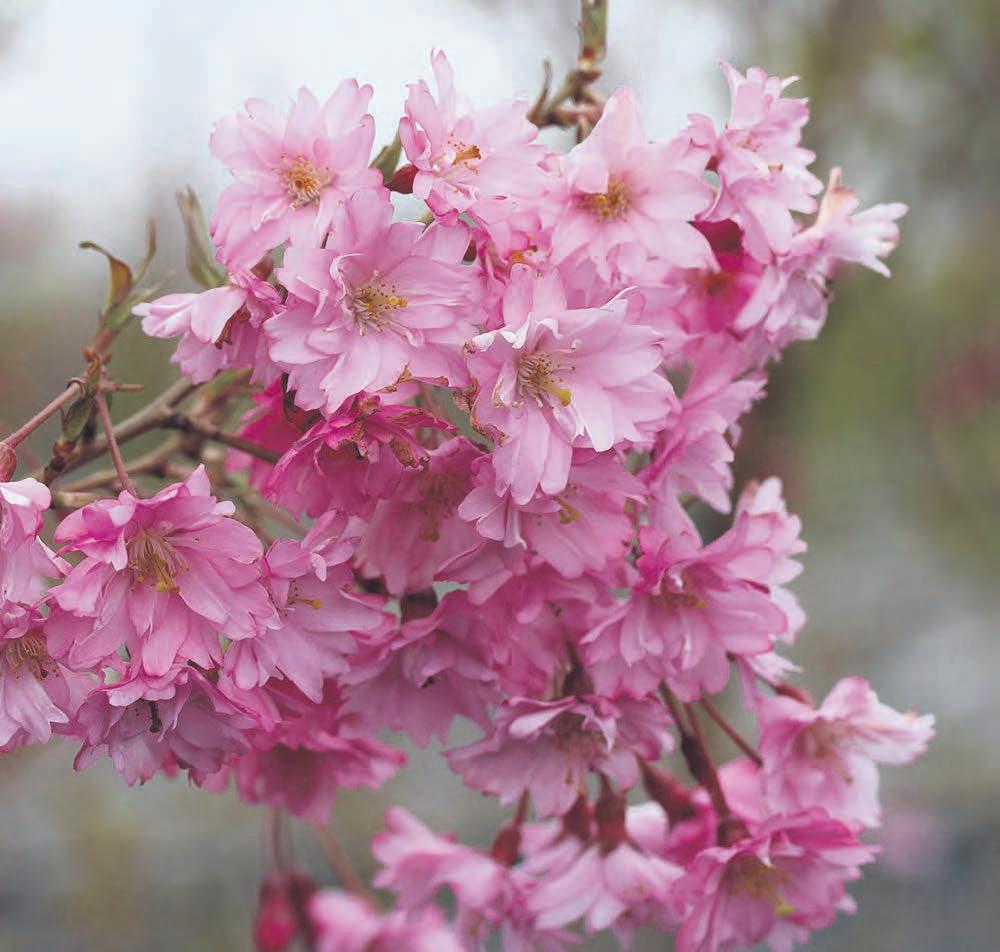














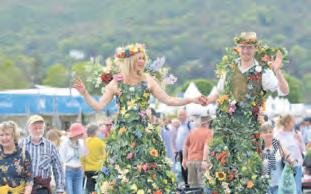
Gardening for everyone is the adopted theme for the returning RHS Malvern Spring Festival at the Three Counties Showground, Malvern from Thursday 11th May to Sunday, 14th May. The event aims to give visitors horticultural inspiration for emerging gardeners through to established green thumbs. This year’s festival boasts a special guest line-up, including TV gardening personalities Alan Titchmarsh, Adam Frost, Arit Anderson, Frances Tophill and Sue Kent. The festival will host the crowning of the first RHS award-winning show gardens of the year, plus a display of new talent and the latest in horticultural trends. For full programme details or to book tickets, see www.rhsmalvern.co.uk

The search starts this month for the RHS School Gardeners of the Year, the competition’s first return since the impact of Covid in 2019. There are two categories.
RHS School Gardening Champion of the Year: an adult who has championed gardening and growing in a school and inspired the pupils they teach.
RHS Gardening Team of the Year: a group of school children gardeners who have made a difference to their school environment. A list of fantastic gardening prizes awaits the winners. For full details see www.schoolgardening.rhs.org.uk
The popularity of vegan markets continues to grow. Cirencester hosts another such market on Sunday, 12th March for a day jam-packed with all things plant-based and cruelty-free.
You can expect to see a wide range of vegan stalls including delicious vegan street food, baked goods and sweet treats, ethical clothing brands, cruelty free cosmetics, arts and crafts, charities and outreach as well as free samples from the info tent. With a fantastic selection of local vegan brands and businesses there really will be something for everyone to enjoy. Vegans, vegetarians, flexitarians, pescatarians, omnivores and just the v-curious - all welcome! Entry free.
34A Market Place, Cirencester, Gloucestershire, GL7 2NW
Tuesday 23rd to Saturday 7th May:
RHS CHELSEA FLOWER SHOW London Gate, Royal Hospital Road, Royal Hospital Chelsea, London, SW3 4SR. rhs.org.uk
Thursday 11th May to Sunday 14th
MALVERN SPRING FESTIVAL Three Counties Showground Malvern. www.rhs.org.uk
The hugely popular and spectacular gardens at Fonthill House is to open three times this year in aid of different charities. The first is on Mothering Sunday, 19th March in aid of the National Garden Scheme, the second is on Sunday, 23rd April in aid of the Cherubim Music Trust. The third and final one is on Sunday 11th June in aid of the NFRSA (National Foundation for Retired Service Animals). Open between 12pm and 5pm.
Entrance is £10 booked in advance via Eventbrite (https://fonthill.co.uk/gardens/), £12 on the gate and children free. Well behaved dogs are welcome on leads.
Fonthill House, Tisbury, Salisbury SP3 5RZ
Gardeners throughout the Cotswolds have been urged to join the Plant Heritage search for the Threatened Plant of the Year. The competition is seeking unusual, rare or special cultivars that are not commercially available. Last year’s winner was Paeonia ‘Gleam of Light’ which was discovered in the garden of Roz Cooper. Vicki Cooke, conservation manager of Plant Heritage said: “We hope to see more interesting entries this year which will change the fortunes of another rare plant.”

www.plantheritage.org.uk/conservation/threatened-plant-of-the-yearcompetition-2023 for how to enter
- DAFFODIL AND JONQUIL
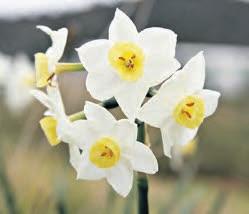
Daffodils are one of the first flowers to bloom in spring, which connects to their representation of rebirth and new beginnings. They also have various region-specific connotations. For example, in Wales and China they are believed to bring wealth.
Jonquils are a specific variation of daffodils, all of which are technically classified as Narcissus. This classification originates from the character in Greek mythology who fell in love with his own reflection until he died. The flower that grew from his final resting place bore his name, now more commonly known as a daffodil.
Thursday 1st to Saturday 3rd June
ROYAL BATH & WEST SHOW The Showground. www.bathandwestshowground.com
Saturday 3rd and Sunday 4th June: THE PLANT FAIR, SCULPTURE BY THE LAKES Sculpture by the Lakes, Pallington Lakes, Dorchester DT2 8QU sculpturebythelakes.co.uk
Saturday 10th June:

ROYAL WINDSOR FLOWER SHOW Windsor Great Park, SL4 2BS rwhs.com
Thursday 15th to Sunday 18th June
BBC GARDENERS’ WORLD LIVE £25 NEC, North Avenue, Marston Green, Birmingham B40 1NT bbcgardenersworldlive.com
Friday 23rd – to Sunday 25th June: BLENHEIM PALACE FLOWER SHOW Shop from exhibitors for plants and arts and crafts in the setting of Blenheim palace Blenheim Palace. Woodstock, Oxfordshire OX20 1PP blenheimflowershow.co.uk
Tuesday 4th to Sunday 9th July
RHS HAMPTON COURT
Hampton Court Palace, East Molesey, Surrey, KT8 9AU www.rhs.org.uk
Friday 18th to Sunday 20th August
RHS GARDEN ROSEMOOR FLOWER SHOW
RHS Garden Rosemoor, Great Torrington, Devon EX38 8PH rhs.org.uk
Tuesday 5th to Sunday 10th September: RHS GARDEN WISLEY FLOWER SHOW
‘Spring will come and so will happiness. Hold on. Life will get warmer.’ - Anon
‘I enjoy the spring more than the autumn now. One does, I think, as one gets older.’
- Virginia Woolf
Seeds, bulbs & baby bedding plants
Seed potatoes & onion sets
Home grown bedding plants, cottage garden plants, shrubs & trees
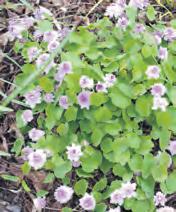




Plant, lawn & garden care products Specialist composts, decorative gravels & pots Specialist bird care

Gretton Road, Gotherington, Cheltenham GL52 9QY 01242 676722

www.gotheringtonnurseries.co.uk info@gotheringtonnurseries.co.uk




Wander through clouds of confetti-like blossom at beautiful Batsford this spring. Browse our Garden Centre for a wide selection of quality plants and gardening essentials. A perfect day out for all the family – including the dog!

Book your Arboretum tickets online at www.batsarb.co.uk


BATSFORD ARBORETUM AND GARDEN CENTRE
Batsford, Moreton-in-Marsh, Gloucestershire GL56 9AT. Tel: 01386 701441 E: arboretum@batsfordfoundation.co.uk

BatsfordArboretum@BatsfordA@BatsfordA

A village primary school will to be the first state school in Gloucestershire to open for the National Garden Scheme, when Churchdown Village Junior School opens for the NGS on Sunday 25th June.
The school in the village just over four miles from Gloucester has won an award from the Royal Horticultural Society for its garden, which has a working allotment, polytunnel, a walk-through forest school with a willow tunnel, shelter and wildlife pond, and a large playing field.
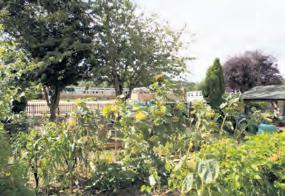
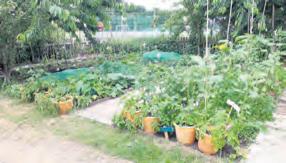
“We’re thrilled to welcome Churchdown Village Junior School to our garden openers for this year,” said Vanessa Berridge, National Garden Scheme Organiser for Gloucestershire.
“We are looking to include different kinds of gardens in our portfolio to interest more people – particularly the young – in gardens and gardening. Visitors will enjoy seeing this productive garden where the children learn so much about growing vegetables and flowers.”
The site is a learning environment for all pupils, with the allotment and polytunnel run by an enthusiastic after-school Garden Club. There will be live music during the open afternoon which will run from 2pm until 5pm, with homemade teas.
A new option for that much needed commodity, fencing, is now on the market. It comes from Hartwell & Co Timber Yard at Weston Sub Edge.
It includes the new superior double slatted panel and matching pedestrian gate. These contemporary, double-sided slatted panel feature alternating slats on both sides to provide complete privacy.
The main image shows the panels and gate with planed and eased posts between the panels. The discreet fixings create

Readers can save £3 on The Garden Visitor’s Handbook 2023, your essential guide to 3,500 fabulous gardens across England, Wales, Northern Ireland and the Channel Islands.
From old favourites to new delights, this handbook is full of inspirational gardens that help support some of the UK’s best-loved nursing and health charities through admissions, tea and cakes.
Order yours for just £13.99 (RRP £16.99) using the code CGM23 at ngs.org.uk/shop
a genuine dual faced panel, keeping you and your neighbour happy!
Perfect for a variety of uses including screening, boundaries and more.
For the seamless look the panels can be supported from the back.
These panels have a quality finish, the slats & battens are smooth planed with rounded edges.

For a modern take on the traditional picket panel, look at the new ‘angle top’ panel and gate. This fencing is a great way to complement an attractive pathway or border. It is ideal for marking boundaries and keeping pets and animals secure.
With vertical smooth planed battens, this high-quality fencing brings a modern look to traditional methods of defining an entrance to your property.
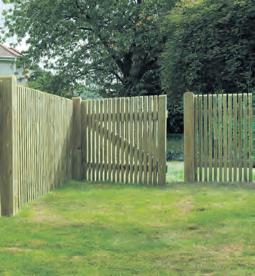
For more fencing inspiration visit Hartwell & Co Timber Yard in Weston Sub Edge, look online www.hartwellfencing.co.uk or call 01386 840373.
Bristol Botanic gardens are clearly aware of the cost of living issues facing many visitors and has introduced a DAISY Day ((Donate As It Suits You) this year. On these days adult visitors will be asked to choose an entrance donation that is affordable to them, £1, £3, £5 or £7. To meet rising running costs, the garden has raised its summer prices to £9 (£9.90 with Gift Aid), from March 21st.DAISY days come into effect with the rise in summer entrance fee and will take place every Wednesday until further notice.
Plans are under way at the botanic gardens for the impressive Easter Sculpture Festival which takes place from Friday, 7th April at 10am to Monday, 10th April at 5pm.
Bristol Botanic Gardens are open Monday to Friday, 10am to 4pm, and are closed at the weekends until 4th March.
A country pub near Winchcombe has had to take drastic action because its historic tree has died. But The Royal Oak at Gretton has retained some of the tree and turned it into a work of art. Staff at the pub, which dates to the 1700s, were sorry that the ancient oak tree outside the premises had to be pollarded for safety reasons. But they decided to retain part of it and commissioned a tree carver to create a sculpture. The result is an impressive creation that has had customers stopping to take pictures before they head into the pub. It depicts the moment King Charles II climbed up into an oak tree to escape Parliamentarian soldiers in 1651.

It happened at Boscobel House in Shropshire during the English Civil War. The incident led to the tree being known as The Royal Oak. A sign hanging outside the pub depicts the moment the king hid in the tree from his pursuers.

The new season of Rare Plant Fairs gets under way on Sunday March 19th, set in the grounds and gardens of The Bishop’s Palace, Wells. There are 14 acres of gardens to explore, including the beautiful well-pools from which the city takes its name.
The fair will be open from 10am to 4pm, and adult entry, which includes entry to the Fair, garden and Palace costs £8. Full details, including a list of the nurseries attending the event, can be found at www.rareplantfair.co.uk.
The Bishop’s Palace, Wells, Somerset BA5 2PD
The new season is being tipped as the year gardeners get to grips with robotic lawn mowers. Interest has been growing steadily in recent years, but this spring sees the dawn of a new mowing age with new autonomous robotic lawn mower products. What is finally persuading lawn owners is ease of use, benefits both to lawns and nature, and energy efficiency of the design.
Technology is the key. For example STIGA, mower specialists who have been at the front of robot technology have an Active Guidance System which uses 4G to transmit course correction data. This means the link between robot and base remains reliable, no matter what obstacles or distance lies between the base and robot.
With no need to lay cable in your lawn, you use the app to drive the robot mower around the perimeter of your lawn and any obstacles within it. You do it once and it remembers every detail. Every STIGA robot mower has an ePower battery built on premium lithium-ion batteries, which contain chemistry optimised for reliability and durability. The new STIGA robots optimises the battery usage as they work within organised cutting patterns ensuring that there is no chance of over mowing. There is also the option to programme the mower to create straight line patterns so you can still enjoy quintessential British stripes!
The new autonomous robots will be available from 1st March from robot dealers and the STIGA website www.stiga.com/uk/
Great displays of spring flowers await visitors to gardens opening for the National Garden Scheme in Gloucestershire during March, so get your walking shoes and boots on to get out and enjoy a country walk.
HOME FARM, Newent Lane, Huntley GL19
3HQ opens for the NGS on Sunday 5th March from 11am until 4pm. It’s set in an elevated position with exceptional views of the surrounding countryside. There’s a one mile walk through woods and fields to see carpets of spring flowers, while the enclosed garden has a fern border, sundial and heather bed, white and mixed shrub borders.
Admission is £4, children free. Dogs are allowed. The garden will also open on two Sundays in April – on the 2nd and 30th, and it’s open for the NGS from January through to April by arrangement with the owner, Mrs T Freeman; contact her for more details and booking a visit on 01452 830210 or email torillfreeman@gmail.com
TRENCH HILL at Sheepscombe, GL6 6TZ opening for the NGS on Sunday 19th March from 11am until 4pm, has around three acres set in a small woodland with panoramic views, and plantings of thousands of snowdrops and hellebores, ponds and a larger conservation pond, waterfall, and interesting wooden sculptures. It’s maintained on organic principles.
Admission is £5, children free. Homemade teas will be available, plants for sale and coaches are welcome. The garden is wheelchair accessible. Trench Hill also opens for the NGS on other Sundays throughout the season and opens for the scheme by arrangement for groups up to 35, from February to August. For more details contact the owners direct, Celia and Dave Hargrave, on 01452 814306 or email celia.hargrave@btconnect.com www.ngs.org.uk
The North Cotswolds and Cirencester charity, Cotswold Friends, urgently needs more volunteers to help older and vulnerable people in the local area to live independently by providing help with community activities,including gardening carer support and volunteer driving.
The charity is launching a ‘100 Volunteers’ campaign to increase volunteer numbers and is asking people ‘are you free in 2023?’ and ‘could you help – or do you know someone who could?’
Cotswold Friends runs a number of voluntary services to improve health and wellbeing and support independent living in the North Cotswolds. The charity’s transport service also operates in Cirencester.
Cotswold Friends also have other Community Activity volunteer support opportunities available including office support, Knit and Natter, support for their new Pop Up Charity Shop coming soon and for their new Connecting Community IT project. Do any of these interest you?
If you or someone you know could help with just one of these volunteering opportunities, please get in touch with Cotswold Friends on 01608 697007 or email volunteering@cotswoldfriends.org
More of us are installing ways to get closer to wildlife in our gardens. Gardenature has developed the world’s first solar-powered WiFi Bird Box Camera System to allow you to get closer to wildlife than ever before and watch nesting birds up close in HD on your smartphone or tablet.

The solar panel’s integrated battery pack keeps the WiFi camera powered for the nesting season - no external power supply needed!
Access to the camera’s live feed can be easily shared with family and friends via the free app, and the camera’s 32GB internal memory can save up to 80 hours of footage.
Other features of the high-spec, wire-free 3MP WiFi camera include, night vision infrared LEDs for viewing in darkness, a light sensor, a sensitive mic to hear the birds, plus motion detection notifications via the app.
The bird box itself is made from responsibly sourced western red cedar and makes an ideal home for a variety of garden birds.
Visit www.gardenature.co.uk or call 01255 429931

We are delighted to be to start a new gardening season with a more in-depth Time Off section as more garden clubs return to a full activity schedule. If your club would like Country Gardener to carry details of your club or societies’ activities then either email us at editorial@countrygardener.co.uk or send details to Time Off, Mount House, Halse, Taunton TA4 3AD
2ND
Ettington Gardening Club
‘CLIMATE CHANGE AND GARDENERS’ - HOWARD DRURY
Details on 07748 137395
4TH
Cottage Garden Society
‘FOUR SEASONS AND A FESTIVAL’ADRIAN JAMES
Details on 01564 783475
8TH
Shipston and District Gardening Club
‘HARDY GERANIUMS’ - JULIE RITCHIE
Details on 01608 666933
9TH
Alderton Gardening Club
‘THE BUTTERFLY GARDEN’ - CHRIS EVANS
www.aldertonvillage.co.uk/aldertongardening-club
11TH
Glos Plant Heritage
‘MEDIEVAL GARDENS’- NATHALIE MIGNOTTE
Details on 01242 674592
14TH
Slimbridge Gardening Club
TALK AND DEMONSTRATION BY HAYLEY FROM MINT HOUSEPLANTS
Details on 07442 163473
15TH
Chipping Norton Horticultural Association
‘COTSWOLDS AND GLOUCESTERSHIRE GARDENS’RICHARD HARVEY
Details on 01608 643275
16TH
Bidford on Avon & District Gardening Society
‘PONDS, MARGINALS AND BOG GARDENS’ - DUNCAN COOMBES Email bidfordgardens@gmail.com

Churchdown Gardening Club
‘FLORA & FAUNA OF LATIN AMERICA’ - PAUL CARPENTER
Details on 07711 311716
Newent Gardening Club
‘THE NGS & GARDENS OF GLOUCESTERSHIRE’ - VANESSA BERRIDGE
Details on 01531 820761
20TH
Warwickshire Group of the Alpine Garden Society
‘NEWFOUNDLAND’ - HILARY LITTLE
Details on 07972 034736
21ST
Lawn Gardening Club
‘GROWING AND SHOWING
SWEET PEAS’ - GILL HAZEL
Details on 01793 523099
25TH
Slimbridge Gardening Club SPRING SHOW
Details on 07442 163473
April
6TH
Ettington Gardening Club
‘CLIMATE CHANGE AND GARDENERS’ - HOWARD DRURY
Details on 07748 137395
8TH
Cottage Garden Society
‘COMPOST TO USE WITHIN A
MONTH’ - MICK POULTNEY
Details on 01608 666933































There is no better time than early spring to experience the sound of the musical feast like no other as birds announce the start of a new day
We all long for spring and more daylight and warmth in our lives but we also need something to lift our spirits.
It’s something to do with the end of winter, the start of a new season and feeling things are changing.
Just as it’s a factor with humans then spring’s increasing day length triggers a hormonal change in birds that enlarges the parts of the brain controlling song production.
The result is one of Britain’s most accessible wildlife dramas – the dawn chorus.
There is no finer example of nature’s capacity to alleviate stress than to listen to this wonderful sound.
Birdsong hits its glorious annual peak in April, when the widest range of bird species throw their energy into one of our most uplifting wildlife phenomena. There are two purposes to birdsong: to attract a mate, and to hold down a territory.
Morning is when females are most receptive to fertilisation after producing an egg and males sing to proclaim their territory and defend their paternity rights.
Birdsong can carry up to 20 times further during the earlier and cooler hours of the day, enabling males' songs to reach more females.
As the name suggests, the dawn chorus is first thing in the day and you'll need to set your alarm early in order get out in the garden or further afield to appreciate the dawn chorus – by 6.30am, it has peaked already and is dying down!
Aim to be in place by 5am – a woodland or park is ideal, but every habitat has a dawn chorus.
The cacophony of birdsong can be intimidating to pick apart and try to identify the different species. However, with a little knowledge you can start to break the wall of sound into individual species.
Songbirds learn and practice their songs, whereas bird calls (made by both songbirds and other birds) are innate.
Blackbirds are also amongst the earliest singers in the dawn chorus, with a fluty and melodic whistle. Blackbirds don't repeat the verses, unlike the song thrush. Like the robin, they are known to sing under artificial light. Although it may be very small, the wren is a startlingly loud bird.
The song thrush is among the first to sing each morning – according to a Royal Society study, typically 47 minutes before sunrise (just after the blackbird). Its signature style is many short fluty phrases, each repeated a few times after a moment’s pause. An oft-quoted estimate is that a male performs a million individual phrases during a breeding season.
In order to appreciate the dawn chorus in all its glory then there is a price to pay in terms of getting up early as the first birds may well start the ball rolling at least an hour before sunrise.
If you want to enjoy the perfect dawn chorus it is worth paying a little attention to the weather forecast. You should be looking for a morning with fine, clear weather, dry and with little or no wind.
Quite why such an ‘early doors’ strategy applies to some birds is disputed.
One thought is that the first light is not the best time for foraging as invertebrates are less active and seeds mor difficult to uncover so there’s time for other things. Perhaps more relevant in the pre-sunrise hour, the land is at its stillest and the sound of birdsong can carry up to 20 times further than those carried at, say, lunchtime.
Celebrating the dawn chorus around the world


International Dawn Chorus Day is celebrated on the first Sunday of May every year. This year it is celebrated on Sunday,May 7. It’s a day set aside for those who appreciate nature’s sounds and look forward to rising at dawn to listen to the sweet music of different birds.

Dusk Chorus
If the idea of dragging yourself our of bed at an unearthly hour doesn’t appeal then there is an alternative. While undoubtedly quieter than its dawn alternative and less dramatic in terms of how the signing starts to build to a crescendo , several birds such as blue tits, tree sparrows and nightingales appear to prefer to save their singing until the slot before bedtime and it’s still a wonderful sound .
One of the great pleasures of the dawn choruses, especially in spring is the length it can go on for. This is because birds have a unique system which allows them to make the most of their voices. A bird’s voice box is called its syrinx which sits at the junction of the two bronchial tubes, meaning the vocal cords can draw air from two sources. This is combined with the ability to take a series of short mini breaths which allows the birds to sing for long periods.
Habitat is important in terms of how and when birds sing and the sound they produce. Somehow, they manage to produce the songs best suited to their habitat. In woodlands or open areas where the sound 0f a blackbird in song reverberates off trees and penetrates much further. In contrast the sedge warbler trilling song travels more effectively across open reedbeds. The sounds of sparrows and blue tits often seem better suited to a closer garden environment.
"There is no finer example of nature’s capacity to alleviate stress"Habitat is important when it comes to a bird's story Birds have a unique system which allows them non-stop singing
Come and enjoy our lovely garden while safely shopping for the following and much more!
Harvington’s Hellebores
Full of bud and gorgeous flowers
Roses
Full range, bare root and potted
Seed Potatoes
Over 20 carefully selected varieties. Onion sets, shallots, garlic, rhubarb, strawberries and Fothergill’s seeds.

Fruit and Ornamental trees
Early flowering clematis now ready
Hardy Perennials and Alpines

Old favourites and Choice varieties

Compost
Peat free and reduced peat varieties

Summer flowering Bulb Collection and fresh Spring Bedding
Cannop Crossroads, Nr Speech House, Royal Forest of Dean, Glos. Tel: 01594 833398 www.pygmypinetum.co.uk

Family-owned and managed “independent” Garden Centre, catering for all your gardening needs and so much more.
Stockist of a wide range of well-known gardening brands and locally sourced plants, trees and shrubs.


Browns Garden
Creating beautiful flowers for all occasions PLUS chocolates, wine, gifts and balloons

FREE LOCAL DELIVERIES (WITHIN A 4-MILE RADIUS) Mythe. A38 Worcester Rd, Tewkesbury GL20 6EB


EMAIL: flowers@flowershedtewkesbury.co.uk
CHILDREN’S PLAY AREA FREE & AMPLE PARKING

When you think of an English cottage garden, you think of hollyhocks. Their tall, towering stems can line a path, stand either side of a gate or bring height and colour to the back of a border. They are wonderful plants that flower all summer long, and no country-style garden is complete without them. They bring height and colour to all borders and are wonderfully straight forward to grow and tend for.
With their open, saucer flowers splashed all the way up their jackand-the-bean-stalk stems, they will bring as much joy to you as they do to the butterflies and bumblebees.
Hollyhocks (Alcea) are flowering shrubs and form a distinct genus in the mallow family (Malvaceae). The ancient garden mallows originally come from the Orient. For a long time, they have also felt at home in English gardens.
Their distinctive feature is their height.
Hollyhocks can grow up to three metres tall and are popular for planting in the back of herbaceous borders or even along house walls, which makes them stand out particularly well.




Hollyhocks are usually biennial, but in favourable locations may well be perennial. If they are reseeded annually, you can look at their beautiful flowers year after year. In the first year, only the rosette of leaves is formed, from which in the second year grows a sturdy, barely branched stem with numerous flower spikes.
The stem and lobed leaves of hollyhocks, about 15 cm in size, are light green in colour and rough-haired. The flowering period of hollyhocks lasts from July to September.
There is a great variety of hollyhocks species and cultivars, whose flowers appear in many different colours and can be unfilled or filled. Probably the best known and most common hollyhock species is the common hollyhock (Alcea rosea). It is also called garden mallow.
The best time to sow hollyhock seeds undercover is in early spring. You can sow the seeds directly outdoors in May and June. If you have bought hollyhocks as plants in pots or raised them from seed, they can be planted out May to July. They flower the following year after planting.
Hollyhock seeds should be sown undercover in April and May. The seeds can also be sown directly outdoors in May and June.
If you’re planting seeds undercover, fill a tray with compost and water it well to ensure that it is consistently moist. If you water after sowing, the water can move the seeds about and they might end up bunching together.
Sow the large seeds individually, spacing about an 5cm (2in) apart on the compost surface. Don’t push the seed, leave them on the surface so they are clearly visible as you continue to sow. When the tray is full, cover lightly with compost.
Place the tray in a warm spot to germinate. You don’t need light at this stage. Cover seed trays with an empty, opened out compost bag to keep in warmth and moisture and to speed up the germination process. After about a week, check trays every morning and night for germination. Once this starts, remove the light-excluding plastic.
Hollyhocks take around 10-14 days to germinate and then another three to four weeks before they’re ready for pricking out. If roots are showing at the base of the tray, they’re ready to move on.
To prick out, handle only the seed leaves, not the stem (which bruises very easily). Get a pencil (or stiff plant label) right under each plant and try to tease out every individual seedling, roots and all.
Place each seedling into its own pot of peat-free compost, firm down and water. The ideal spot for growing on has maximum allround light. Ideally, plants should have warm roots but cool tops.
Hollyhocks will be ready for planting out in the garden by June, but won’t flower well until the following year. If you get the odd plant trying to flower sooner, snip off the flower spike. This helps the roots to get established before the demands of flowering begin – otherwise you might end up with a weaker plant and that could lead to more trouble with rust.
Hollyhocks self-seed readily if you allow the flowerheads to go to seed. If you don’t want this to happen (and you don’t want to collect the seed), you can cut the flower spikes at the base of the stem once flowering is over.
You can allow hollyhocks to naturally self-sow, or you can wait for the seedheads to go brown and dry and then collect the seed – you can sow this in spring to make new plants.
Hollyhocks that have sprung up of their own volition will often creep to the sunny, open front of the bed. Watch out for this and dig some up and put them further back out of the limelight to get a balanced sweep. Don’t transfer them directly, though – they need a short spell of TLC. So dig up self-sown seedlings and pot them into average size pots. Once the roots have filled it, plant them in the garden.
distinctive feature of hollyhocks is their height, often up to three metres and their ‘jack-and-the-beanstalk’ stems are a delight to bees and butterflies as much as gardeners

This year already seems to be a boom year for pullet and coop sales, and it isn’t surprising. Having a few hens in the garden or on the allotment is more popular today than almost any other time in history. In the first of three articles for Country Gardener, Libby Siddall covers everything you need to know about keeping your own chickens for eggs.
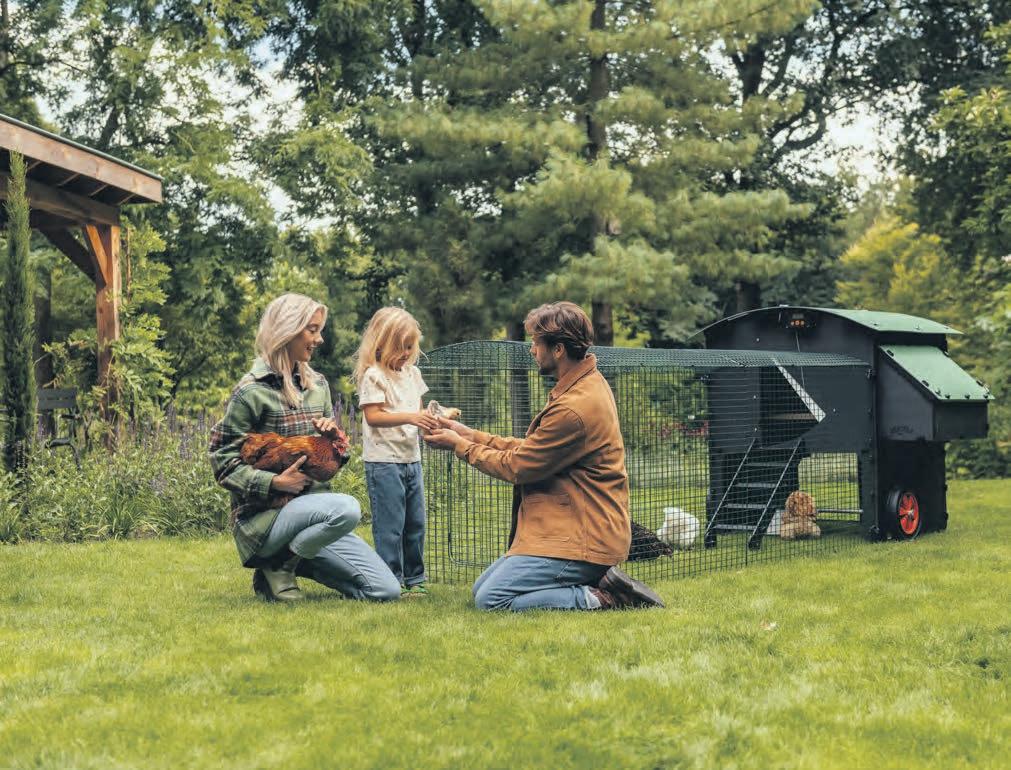
If you have a garden with ample space then you can keep chickens. And even better...it’s not difficult.

Chickens are easy animals to look after, they are entertaining, they’re a natural pest killer, and most importantly they lay delicious, fresh eggs!
During World War Two, rationed Brits were keen to supplement their larders with extra eggs and meat from poultry. Boiled potato peelings and other kitchen scraps were mixed with bran to turn waste food into a valuable commodity. Sadly, the emergence of diseases like Foot and Mouth and BSE has meant that DEFRA has banned the feeding of kitchen scraps to all livestock for decades now.
Interestingly, this is not the case the other side of the English channel. Town mayors across France and Belgium regularly offer households free chickens to use up their food scraps in order to save on refuse collection costs.
Since COVID and BREXIT, food security has been at the front of many people’s minds. The supermarkets are less well stocked, partly through their failure to pay farmers fairly for the goods they produce as well as import issues. In the US, Bird Flu and rising costs has pushed the cost of a dozen eggs to an eye watering seven dollars per dozen in places. As such, more of us than ever are looking to live more self-sufficiently, reduce our food miles and know where our ingredients are coming from.
Home reared, fresh eggs have a superior taste and higher levels of nutrition than those that are factory farmed, mainly due to their regular access to grass. If you are a keen vegetable or fruit grower it seems almost criminal NOT to keep a small flock to help gobble up weeds, insects and windfalls.
Any leftovers from the vegetable patch will be warmly welcomed by your flock too. Eggs are the most environmentally and welfare friendly way of turning feed into animal protein. The yolks from most supermarket eggs are coloured by adding artificial dye to the feed whereas natural rich yolk colour comes from a diet rich in carotenoids from dark leafy greens.
Eggs are packed with a mind-boggling array of vitamins and minerals that are essential for our wellbeing as well as an important protein that protects our eye health too.
It is simplest to categorise chickens into three main group; broilers, hybrids and pure breeds.
Broilers are chickens that are specifically bred for rearing for meat and grow from day old chicks to ‘table ready’ in less than two months. Their bone and organ structure is not designed to outlive this very narrow window of time. They are bred to be reared indoors with high levels of biosecurity but some cope well with time outdoors. These are only available from specialist suppliers.
Hybrids are chickens whose main aim is to convert all the egg cells they are born with into fully shelled eggs in the fastest time possible. The offspring usually look different to their parents. They do not tend to go broody in the summer and often make poor mothers. They will generally lay for around two to three years and will usually not live past the age of five. These are only available as chicks or point of lay birds from
“Whatever you choose, don’t get too many. Many people get rather carried away and decide they are going to get a dozen hens despite being a household of just four.”
professional rearers and larger poultry suppliers such as ourselves.

Pure breeds are bred to meet certain breed characteristics. Most are hatched and reared by back garden or hobby breeders and increasingly by larger scale operations. The best conforming examples are kept for showing and competitions while the remainder are sold as pets. The breeds we offer are limited but do include parents from show winning lines.
Whether you choose hybrids or pure breeds will depend on your main purpose for wanting hens and the size of garden you have. Generally, we recommend hybrids for those looking for layers who will produce a large number of eggs on a regular basis. Hybrids have great personalities, come in a wide range of feather colours as well as egg colours.
Nestera have healthy, hardy hens that lay white, blue, olive and dark shelled eggs. These breeds thrive in larger gardens as they are so ‘full on’. Everything they do is at 110 per-cent, they grow quickly, come into lay early and profusely. They like to be into everything and enjoy scratching the ground which can be a bit destructive if they have completely free range. These birds do best when they can have around four square metres each to roam around in. Alternatively, you may be looking for something a bit more mellow and gentle on your lawn. Pure breeds make ideal pets and are the perfect choice if you want something a bit more quirky with productivity taking second place.
They come in a mind-boggling range of shapes and sizes and from all four corners of the planet. The largest ones Nestera stock are Brahmas and Cochins and these gentle giants are stunning to look at as well as excellent mothers to chicks. At the other end of the scale there are some cracking little bantams. If you have limited space and like characterful pets, bantams are perfect. These also tend to be favoured by young families, particularly the friendly breeds like Pekins and Silkies.
Most pure breeds have a tendency to ‘go broody’ when they decide they would like to incubate a clutch of eggs. Broodiness is usually triggered by lengthening days and a marked increase in environmental temperature. The absence of a cockerel to fertilise their eggs, does nothing to dissuade them. Their hormones are flowing and they can be rather stubborn so they must be regularly evicted from their nest boxes.

Whatever you choose, don’t get too many. Many people get rather carried away and decide they are going to get a dozen hens despite being a household of just four.
How many eggs do you realistically think you can eat in a week? Chickens are easy and inexpensive animals to keep but a dozen hens will churn up your garden twice as fast as six would and they’ll eat twice as much too!
Some chicken keepers like to mix and match their flock members including pure breeds and hybrids. This is not for the faint hearted as the larger birds will be keen to establish the pecking order over the smaller ones. If you are new to the game, it’s generally recommended to stay with one group or the other. If you are a veteran of flock management and you have the space, a few extra feeders and drinkers can make all the difference.
Adding any new hens to an existing flock can be stressful for the older girls, the newbies and their human. Adding a good number is best, never just one and preferably at night. It’s important not to humanise the pecking too much and just let them get on with it. Amazingly after 24-48 hours, everyone knows where they stand, and the dynamic becomes considerably more settled.
Libby Syddall is the co-founder of ‘Chickens to your Door’ supplying comprehensively vaccinated, point of lay hens. These can be delivered nationwide or be collected from one of 13 pick-up points across the South West.
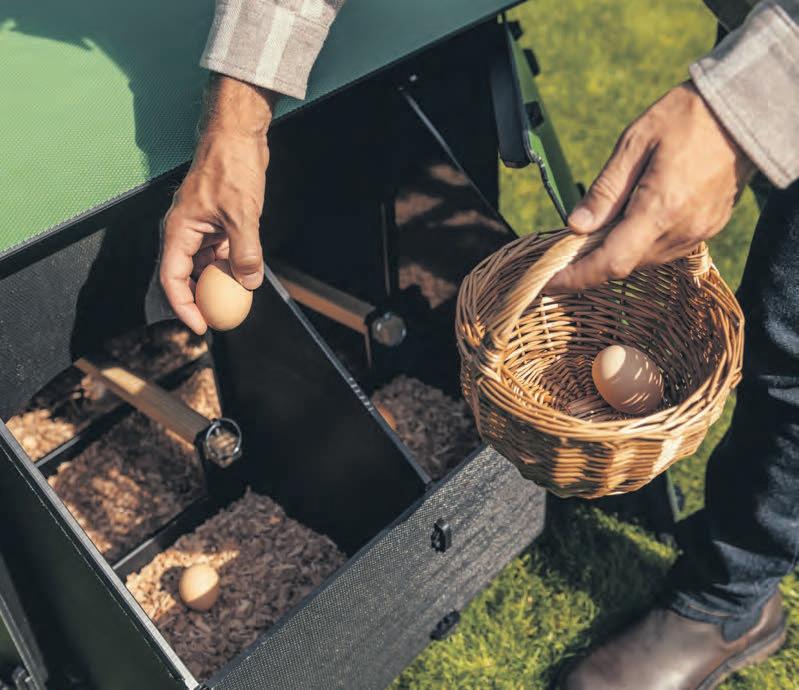
www.chickenstoyourdoor.co.uk
She is also Head of Chicken Welfare for Nestera, the world’s largest sustainable chicken coop company.
www.nestera.co.uk
How many chickens should a beginner start with?
Chickens are extremely flock-oriented, so a good starter flock size is no fewer than three chickens. You should collect about a dozen eggs from three laying hens. A flock of five or six hens is a good choice for slightly larger families.
Do single chickens get lonely?
If a chicken is by itself for a few weeks, it will be fine, but after a while many chickens who are kept alone seem to get lonely and depressed. They become lethargic, or start pacing and manically pecking at random objects.

Do chickens like to be petted?
Many chickens love being given affection and one key way you can give it to them is by petting them. However, they usually only allow this type of contact once they get used to you and if you interact with them calmly and gently.
How do I choose the right size of coop?
The hen house should be considered as an investment that will protect your birds and make your life easy. Convention says you should allow one sq ft of house floor area per bird in a house and it should have a large access door for you to be able to reach inside to clean it.
Where is best to site the henhouse in the garden?
You should consider, when choosing a site for the house, how to offer some natural protection for the hens from the sun, wind and rain.A good idea is to plant small trees in the pen to provide some shade (not bushes as they may be encouraged to lay under them) or place the house so they can shelter in the lee. For the very worst of the cold wintery weather, it may be an idea to make a sheltered place for them to keep out of the wind.
Can I complain about neighbours’ chickens?
Local councils are legally obliged to investigate any complaints made under the Environmental Protection Act 1990 relating to public health and nuisance issues. With regard to keeping poultry this normally involves noise, odour and the attraction of insects and vermin.
Rhode Rock: confident, friendly birds, not easily stressed Plymouth Rock: one of the most docile of birds laying deep brown eggsPlants with attractive foliage, like artemisia and coleus, will also be handy for arrangements.
Plant flowers that dry well and will extend your bouquets into winter.

Grow what you love. If you want sunflowers all summer, give them top priority in your cutting garden.
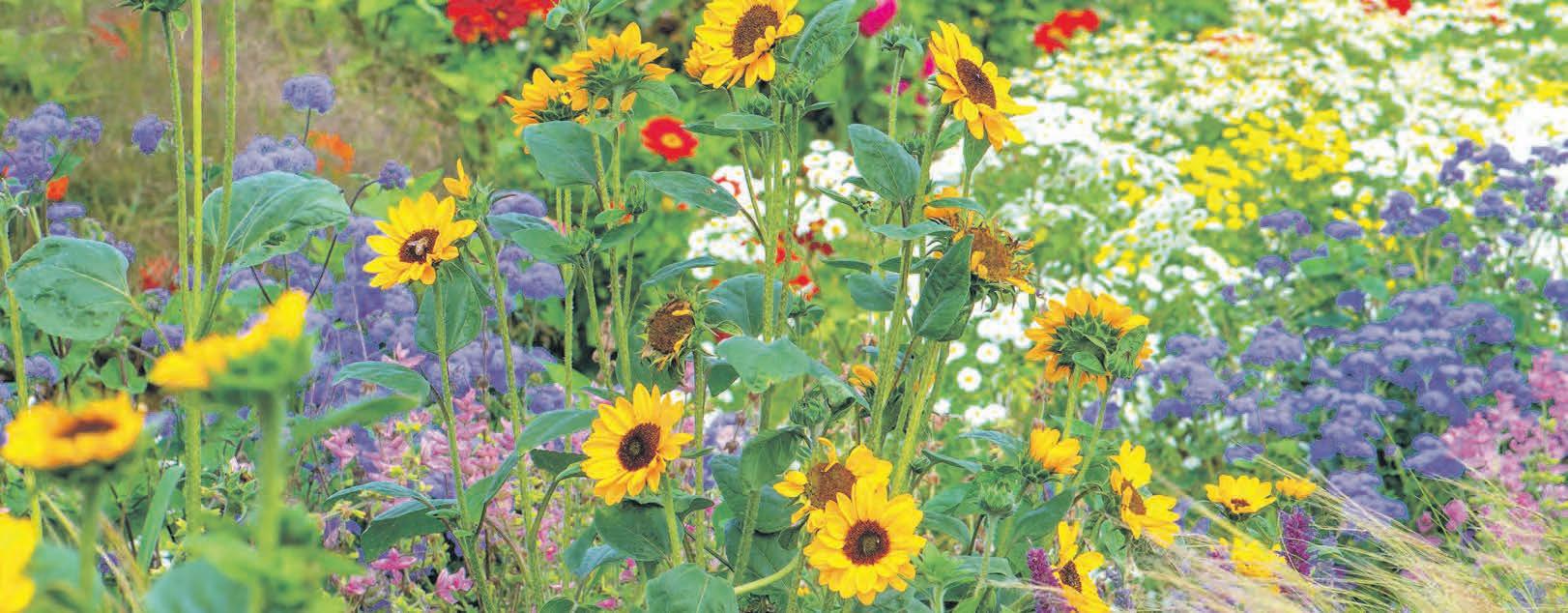
Thankfully, it’s easy to incorporate an area for cut flowers as part of your flower bed ideas. All you need is an empty plot of ground and a few packets of seeds.
“Growing a cut flower garden is a much more sustainable way of growing flowers for arranging in your home and avoids buying ones that have been flown halfway across the world,” explains Amelia Bouquet, who trained in garden design at the English Gardening School.
“Plants that produce more flowers as you pick them should form the backbone of your cut-flower patch,” advises Amelia. “So, make sure you include plenty of hardy and half-hardy annuals.
The most efficient way to set up a cutting garden is to grow your flowers in rows, as you would vegetables. In fact, growing a row or two of flowers in your vegetable garden is an easy way to get started.
Creating a planting plan is the best way to maximize your growing space. Use a grid to make your plan. This makes it easy to determine out how many plants can be squeezed into each row. Your finished planting grid can then be transferred to the garden.
Your cutting garden should be much easier to maintain than a regular flower garden. Ideally, you will be spending almost all of your time cutting flowers and very little time weeding.
Start with the paths. As soon you have planted the beds, cover up the paths with landscape fabric, black plastic, cardboard, straw or some other material that will stifle weed growth. Mulching the pathways also helps to reduce evaporation and retain soil moisture.
It’s such a delight to see flowers blooming in the garden that it’s often hard to cut them to bring indoors.
And that is the beauty of a designated cutting garden. This year find a sunny spot in your yard and fill it with plants grown to be cut. Then treat your cutting garden as your private source of flowers for bouquets to brighten your indoor spaces.
You don’t need a lot of space and you can designate a few rows in your vegetable garden to flowers. You get flowers to cut, and the flowers will attract more pollinators to your vegetables. Annuals are the most traditional cutting flowers, although it is entirely possible to have a perennial cutting garden. Many annuals tend to repeat bloom and you can grow them quickly. Whichever you choose, here are a few things to consider:
Plan for flowers with long stems since you will be cutting and displaying them.
If you love fragrance, make sure you include some scented flowers.
Include some filler plants, like baby’s breath or coral bells.
“You can extend the picking season by planting extra bulbs and some biennials – the likes of sweet William and sweet rocket – which are perfect for bridging the flowery gap between bulbs and annuals,” she adds.
If you’re unsure where to start, these succession planting tips will help.
“For a year-round successional supply you could have options such as hellebores, spring bulbs, aquilegia, wallflowers, pinks, sweet William, peonies, alstroemeria, sunflowers, dahlias, asters, chrysanthemums, kniphofias and daphne in winter, an abundant medley of selfreplenishing, cut-and-come-again varieties, such as cosmos zinnias, scabious and sweet peas, which will produce more flowers after cutting.”
Growing your own flowers means you can enjoy seasonal posies and bunches of flowers at a fraction of the cost of shop-bought blooms – and of course, it’s an eco-friendly way of growing cut flowers, too.
Give your cutting garden a sunny spot with well-drained soil. Prepare the planting area, making sure it is loose and weed-less. If possible, take time to work in compost and all-purpose organic fertiliser.
Local market gardeners who grow cut flowers, often cover their planting beds with black plastic. Then they burn or cut holes in the plastic to give each plant its own spot. In a cutting garden, deadheading will be your primary maintenance task.
Removing spent flowers encourages annuals (and some perennials) to continue producing buds. If you don’t remove the dead flowers, plants assume they have fulfilled their mission and can shut down for the season.
HELLEBORES
Hellebores are magnificent plants which begin to bloom from late November until late April.
NARCISSUS
Narcissus, or daffodils, are charming bulbs to add to spring arrangements.
RANUNCULUS
Ranunculus come in shades of pink, purple, orange, yellow, red, coffee, cream and white. Related to buttercups, they are fabulous flowers full of tissue paper ruffles but no scent. They flower from May to July.
ALLIUMS
There are a huge range of allium bulbs to choose from. Some are small and dainty, whilst others have heads the size of footballs.
TULIPS
Tulips are an investment but the stunning flowers in April and May make them a glorious addition to the cutting garden especially when mixed in with blossom.
CORNFLOWER
Cornflowers, reminiscent of summer meadows, last well out of water making them ideal for use as wedding flowers.
PEONY
Peonies are the epitome of early summer, flowering from May to early July. With huge, heavy-headed ruffles of scent, each plant will produce several blooms.
SWEET PEA
Sweet peas are climbers so will require a wigwam type support or netting to grow up.
Your own private source of cut flowers doesn’t need a lot of space and with planning can provide annuals and perennials to cut from March through to OctoberAnnuals are the most traditional cutting flowers
Feeling tired and don’t know why? You’re not alone. According to a recent study, less than half of us consume our recommended daily amount of magnesium, a mineral that helps turn the food we eat into energy.
Best known for helping to reduce tiredness and fatigue, magnesium is also vital for our health.
Deficiency can cause mood swings, migraines, eye twitches and muscle cramps. If you have low magnesium levels, you are also less likely to get a good night’s sleep.
Magnesium is present in foods such as black beans, bananas and pumpkin seeds, but to get the benefi ts we need to absorb it into our bodies.
One way to ensure we consume a consistent level of magnesium is by taking a daily supplement – but not all
supplements are equal. Your body’s ability to absorb the magnesium depends on the way that the supplement is made.
‘Most supplements use magnesium oxide – it is the most common form, as it has a high concentration of magnesium but it’s not easily released into the body,’ explains Dr Miriam Ferrer PhD, head of product development at FutureYou Cambridge.

‘Taking more magnesium to try and make up for the problem isn’t the best approach, as too much can cause an upset stomach so we created Magnesium+

*Just pay £1.50 postage
FutureYou Cambridge, a nutraceutical company known for its well-researched nutritional supplements, is giving away packs of its flagship energy product to new customers.
It comes after the Cambridge firm received a fl urry of positive reviews for its bestselling energy product on Trustpilot, the independent online review platform.
‘A few months ago I realised that I had no energy at all.
using magnesium lactate which is twice as absorbable as a standard magnesium oxide supplement. This means you need much less per capsule to deliver the same amount, making it a much more efficient way to take this essential mineral.’
‘I started to feel much more perky – that’s the best word to describe it.’
Reviews gathered on independent website Trustpilot speak of its effectiveness. ‘It gives your body a magnesium boost without upsetting your digestive system,’ writes Robert.
And Nicole, says: ‘I genuinely started to feel different within a couple of weeks. I started to feel much more perky – that’s the best word to describe it.
‘I feel like I’ve got more energy and more desire to do stuff. I’ve taken them religiously ever since.’
“Within two weeks I was a different woman, with energy to spare”
I put it down to my age, but it was really impacting on my life in so many ways. My husband read an ad for Magnesium+ and I thought I would give it a
try. Within two weeks I was a different woman, with energy to spare,’ says Anne. Adam Cleevely, FutureYou Chair, explains the thinking behind the offer: ‘After receiving so much positive feedback on Magnesium+, our team is confident that people will love it.’
Plants are moody things. You watch them form and grow and think everything is going well in the greenhouse or vegetable patch.
Then something happens. You notice yellowing leaves or vegetables which have slowed down in the growing process. The effect is stressful-not unlike having a sick two-year-old child.
Your gardening diagnosis is that your plant is nutrient deficient and needs help. Urgently.

So, you start looking for some help for it. It must be organic – that goes without saying and then the problem begins because you must fight your way through lots of options, all for different remedies, different lists of ingredients and nutrient numbers.
So, my Country Gardener letter is about trying to help fellow gardeners through this maize of options so whenever your plants need some help then you have it ready and waiting in the garden shed.
I should say I am also a great believer in us making our own fertilisers so I have touched on that a bit as well.
I’ve been gardening for a long time now and its true you build up a ton of knowledge into what works and what doesn’t work.
Every bottle of fertiliser will have three numbers usually represented by NPK.
Understanding this makes an instant impact on finding something which has a good chance of working in your garden.
• N stands for nitrogen
• P stands for phosphorous
• K stands for potassium
So, let’s try and de-code these letters. Nitrogen is used by plants for foliage and shoot growth which is vital during the early stages of a plant’s development and for leafy crops.
Phosphorous helps form new roots.
Potassium is essential for making flowers and fruits. It is especially important for fruiting crops such as tomatoes. Plants also need smaller supplies of micronutrients, iron, boron, magnesium and copper to name a few.
If you see these on the label you’ll know it’s a good product.

I should say I have no doubt that your plants need these plant foods if you are to have the best crop available. Some of my fellow allotment holders say feeding plants is not necessary. I will always argue they need it and I have the proof when it comes to harvest time , better , healthier and often prize winning fruits and vegetables.
My belief is that you must feed the soil not the plant. So, you should add something which you believe is lacking in your soil.
As I’ve progressed through growing season after growing season, I’ve developed some favourites which I now rely on and am happy to recommend. They are not clearly the only things that work but, in my experience, consistently help me with healthier crops and better yielding fruit and vegetables.
Firstly, I think seaweed fertilisers are exceptional and I have found always provide a difference.
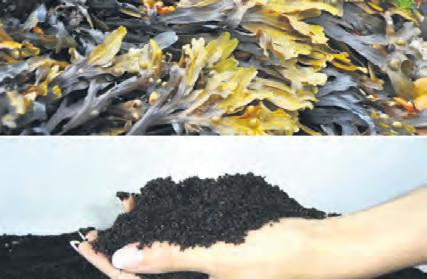
One key benefit of using seaweed fertiliser over time is it acidifies and adds iron to the soil, which is great news if you are growing acid and iron-hungry plants like gardenias, camellias, azaleas and rhododendrons. You can apply a seaweed solution in early morning or late afternoon. It can be applied over the foliage and around the root system of the plant. It is usually applied every two to four weeks. You can continue to water your plants any time after applying it.
I am a passionate grower of tomatoes and they love seaweed. Berries, like tomatoes, love seaweed fertiliser which not only promotes healthy growth of the tomato plants but also prevents blossom end rot, as we all know one of the most common and upsetting problem in tomatoes.
So now my number one product. It is the concentrated fertiliser from Natural Grower which I have been using for four years now.
I came across it by accident when a friend bought the wrong fertiliser and I was forced to use it. It was a happy error. It’s a product which is organic so ticks that box, as I insist on chemical-free in the garden and on the allotments so you can use it on the allotment where there are often children and animals. You just add it to your watering can and a large bottle lasts me ages.
Banana peel
Plants like bananas as much as humans. So when you are finished with the banana chop up the peel. It is rich in vitamins and minerals including potassium which is one of the three essentials. You can either place the peel in a jar and leave for 24 hours then water your plants with the water infused water or place the peel on the soil around your plant or the planting hole.
Coffee grounds
For acid loving plants such as blueberries, azaleas, rhododendrons and hydrangeas I spread dried coffee grounds around the base of the plant. Coffee grounds are rich in nitrogen, phosphorus, potassium and in a range of micronutrients so ideal for plants and a cheap option too.
“I have no doubt that your plants need these plant foods if you are to have the best crop available”
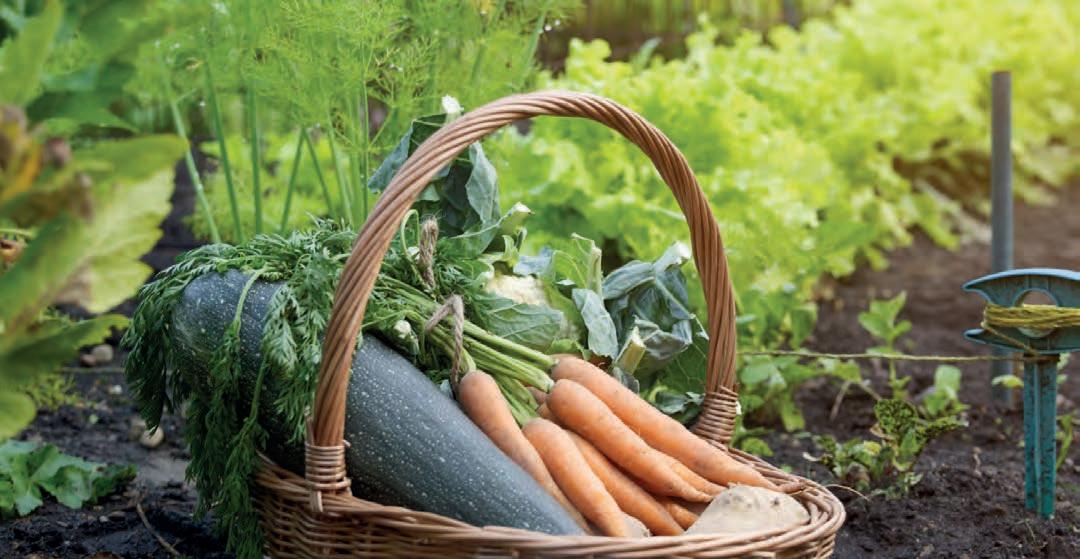
Henshaw has been gardening for over 30 years
his
garden outside of Exmouth and on a local double allotment. He has in that time become a believer that plants need a balanced diet if they are to thrive and is keen to share his views on organic plant foods
This fast, efficient solution transforms your conservatory into a comfortable year-round living space. Exclusive to Conservatory Insulations, the UK market leader, this Conservaheat layered foil quilt system comprises technology developed by NASA for the Space Shuttle programme
This fast, efficient solution transforms your conservatory into a comfortable year-round living space. Exclusive to Conservatory Insulations, the UK market leader, this Conservaheat layered foil quilt system comprises technology developed by NASA for the Space Shuttle programme
This fast, efficient solution transforms your conservatory into a comfortable year-round living space. Exclusive to Conservatory Insulations, the UK market leader, this Conservaheat layered foil quilt system comprises technology developed by NASA for the Space Shuttle programme






The outer foil of our quilt incorporates a unique True Aluminium Foil, specifically designed for conservatories. The benefit for you is it helps maximise heat retention Suitable for all roof styles, it is a cost-effective solution which insulates your conservatory for a fraction of the cost of a new tiled roof.
The outer foil of our quilt incorporates a unique True Aluminium Foil, specifically designed for conservatories. The benefit for you is it helps maximise heat retention Suitable for all roof styles, it is a cost-effective solution which insulates your conservatory for a fraction of the cost of a new tiled roof
With this proven energy-saving product you and your family can relax in complete comfort all year round
With this proven energy-saving product you and your family can relax in complete comfort all year round
The outer foil of our quilt incorporates a unique True Aluminium Foil, specifically designed for conservatories. The benefit for you is it helps maximise heat retention Suitable for all roof styles, it is a cost-effective solution which insulates your conservatory for a fraction of the cost of a new tiled roof.

With this proven energy-saving product you and your family can relax in complete comfort all year round




• Eliminates external noise








One of the nicest things about the start of a new gardening season is the chance to get the diary out and start to plan which of the wonderful array of garden show, country and town show, plant fairs and events you’ll be attending. This year sees a full return to all the popular and well known garden shows throughout the Cotswolds and south west of England, starting in Cornwall in early April with the Cornwall Garden Society’s Spring Flower Show and running through to a busy calendar of events through the summer and into the autumn.
Here are just a few which stand out:




Dramatic displays of spring flowers and shrubs, exquisite exhibits by specialist nurseries and floral artists, and an extensive array of horticultural traders are just some of the highlights of the Cornwall Garden Society’s 2023 Spring Flower Show to be staged at The Royal Cornwall Showground near Wadebridge on Saturday, 1st and Sunday, 2nd April.
Described by The Daily Telegraph as ‘the most highly regarded spring show in the country’, this popular two-day family event celebrates Cornwall’s early spring.


Over eighty exhibitors will inspire enthusiastic amateur gardeners and seasoned horticulturists alike. Gardeners’ questions and panel discussions will entertain and inform. An artisan area will showcase contemporary Cornish crafts.
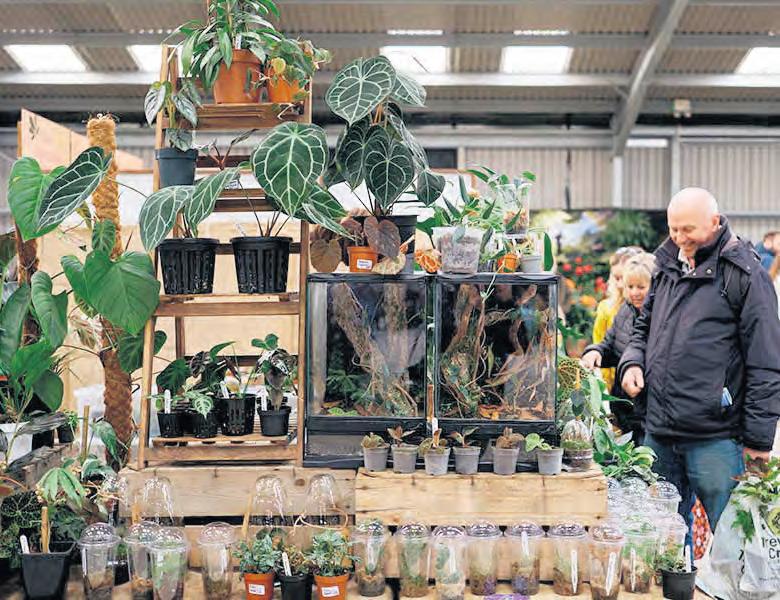
Tickets: £10 in advance. £12 on the gate. £6 for CGS members. Free admission for under 16s. Well-behaved dogs on leads are welcome. www.cornwallgardensociety.org.uk/spring-flower-show/ June 17th &
Cornwall Garden Society
Saturday 1st April, 10am - 5pm
Sunday 2nd April, 10am - 4pm
The Royal Cornwall Showground, Wadebridge
cornwallgardensociety.org.uk/ spring-flower-show

Traders and Entertainers are already booking to take part at the popular Axminster show on Saturday,17th and Sunday,18th June. An exciting programme of new entertainment will include The Horseman of the Night who will give a display of jousting and horsemanship. Marquees and stalls will be filled with garden furniture to soaps and jams and you can watch demonstrations, listen to talks or dance to the music. The Axe Vale Show raises funds for local charities. Discounted tickets can be purchased at www.axevaleshow.co.uk

The Honiton Agricultural Show is planning for a great summer celebration of rural life in the East Devon countryside on Thursday, 3rd August. A fabulous array of fantastic entertainment is planned; including The Devil’s Horsemen with some of the world’s best known horses from film and television. Squibb Freestyle Motocross Arena Stunt Show are returning. There’s special entertainment for children. Yet at the heart of the show is the livestock and horses including the majestic heavy horses, private driving and a variety of sheep breeds and dairy and beef cattle. With lots of shopping on offer, food and drink to tickle everyone’s tastebuds there is something to appeal to all the family. For further details on the show or information on becoming a member of the association contact the secretary on 01404 41794, follow them on twitter @honitonshow1890. Gates open at 8am until 6pm. Discounted early bird tickets are available now at £17.50 in advance (ticket prices held from 2022). Under 16 are admitted free. Visit www.honitonshow.co.uk to purchase your ‘early bird’ ticket.
Organised by Plant Heritage Dorset
Sunday 14th May 2023
At Athelhampton House, Nr Puddletown, Dorset, DT2 7LG
Sunday 25th June 2023 & Sunday 10th Sept 2023
Both at Abbotsbury Subtropical Gardens, Dorset, DT3 4LA
Plant Fairs open 10am – 3pm.
Admission £7.00 includes entry to the gardens (until 5pm). Free to all Plant Heritage Members.

Many specialist nurseries and growers, including National Collection Holders, large selection of garden stalls plus craft & wildlife stalls. Quality refreshments and food. Free parking.
Beautiful locations.
Proceeds support Plant Conservation & Education in Dorset www.abbotsbury-tourism.co.uk/gardens/events
www.athelhampton.com/events www.plantheritage.org.uk/local-groups/dorset

If you are looking for great plant buying days out, then a specialist plant fair offers most of the answers in 2023! We bring the nursery to you with growers from across the region for you to choose your next favourite plants!
South Somerset-based Plant Fairs have four fairs this year and they select a range of growers each year offering choice, interesting plants and plants for all budgets. There are always great value purchases amongst the 30-plus stalls at the larger fairs (15 at Sherborne on Saturday, 18th March) .
There will be stalls selling alpines, succulents, bulbs, herbs, perennials, shrubs, camellias, roses, trees, tomatoes, fruit, and vegetable plants, also metal plant supports, so something for every gardener whatever size or type of garden.
Refreshments: at the Sherborne fair (indoor event what-ever the weather) there’s a pop-up café with filter coffee and tray bakes; at Mapperton the Coach House café be will open serving drinks and snacks and at Yarlington the popular refreshment tent run by local volunteers serves up tea, coffee and cakes.
For more information about the fairs including entrance tickets, times and full nursery listings visit www.plantfairs.co.uk

RHS Malvern Spring Festival will return to the Three Counties Showground, Malvern from Thursday 11th May to Sunday, 14th May with a spectacular four-day gardening extravaganza. The theme for 2023 is ‘Gardening for Everyone’ and aims to give horticultural inspiration for emerging gardeners through to established green thumbs. This year’s festival boasts a special guest line-up, including TV gardening personalities Alan Titchmarsh, Adam Frost, Arit Anderson, Frances Tophill and Sue Kent. The festival will host the
19th March

The Bishop’s Palace, Wells, Somerset BA5 2PD
Fair open from 10am – 4pm
www.rareplantfair.co.uk
Please visit our website for full details of admission fees and times of opening.
Sunday 11th June 2023 2 - 6pm Visit beautiful private gardens, the very special Norman church and enjoy refreshments and ice creams.


SAVE THE DATE
We are still planning the event and updated details will be posted on: www.elkstonevillage.com
HELP SUPPORT OUR CHURCH AND VILLAGE HALL
FONTHILL HOUSE

Charity Garden Openings
SUNDAY 19TH MARCH in aid of the NGS (12pm – 5pm)
SUNDAY 23RD APRIL in aid of the Cherubim Music Trust (12pm – 5pm)
SUNDAY 11TH JUNE in aid of the NFRSA (National Foundation for Retired Service Animals (12pm – 5pm)
Variety of wonderful stalls, Ice cream van, Refreshments tent serving sandwiches, cakes, tea, soft drinks etc, Wine stall (April & June only) Well behaved dogs on leads welcome Unfortunately there is restricted wheelchair access in the gardens
FONTHILL HOUSE Tisbury, Salisbury
SP3 5SA For more information visit www.fonthill.co.uk/gardens

We look forward to welcoming you on Thursday 3rd August 2023
Acts Booked So Far... Devil's Horsemen - Cossack Trick Riding, Jamie Squibb Freestyle Motocycle Stunt Show, Animated Magical Moments, Twistopher Punch & Judy, Professor Crump. Livestock, Horses, Vintage Tractors & Classic Cars. Over 400 Trade Stands. Fabulous food and entertainment.


ADVANCE TICKETS JUST £17.50 (ACCOMPANIED UNDER 16 GO FREE) AVAILABLE FROM www.honitonshow.co.uk


Secretary: Marcelle Connor, Bank House, 66a High Street, Honiton, Devon, EX14 1PS info@honitonshow.co.uk




EARLY SPRING PLANT FAIR

Saturday 25th March 2023



10am - 3pm (Garden open until 4pm) at Yeo Valley Organic Garden, Holt Farm, Blagdon BS40 7SQ
Many top nurseries attending from England and Wales, plus stalls selling garden artefacts.

Yeo Valley products and light refreshments available from the shop and café throughout the day.
Pre-booking is essential. Admission charge will be £5 (£4 for HPS & RHS members)
Booking opens 5th February 2023




Visit www.somersethps.com



This year there will be three specialist fairs in Dorset to look forward to, organised by Plant Heritage. The dates are
• Athelhampton House: Sunday 14th May
• Abbotsbury Gardens: Sunday 25th June

• Abbotsbury Gardens: Sunday 10th September
The first is a welcome return to Athelhampton House after three years. This venue is on the large west lawn of a Tudor Mansion House, adjacent to its large dovecote, formal gardens and the picturesque River Piddle.
The second and third plant fairs will be held at Abbotsbury Subtropical Gardens and, as with Athelhampton House, admission to the fairs is £7 which includes free access to the gardens until 5pm. Plant Heritage members can get in free with a valid membership card. Both venues offer plenty of room. In addition to the permanent catering facilities, there will be an Italian coffee stall. If you wish to book Sunday lunch please contact the venues direct.
For further information visit www.plantheritage.org.uk | www.athelhampton.com | www.abbotsbury-tourism.co.uk/garden/events
Elkstone is one of the highest villages in the Cotswolds. On Sunday, 17th June from 2pm to 6pm a special Open Gardens Day in the village allows you to visit areas not normally accessible to the public. Organised by villagers this raises funds for the upkeep of the Norman church and the village hall. So, you can visit open gardens, the coronation meadow, hear the church bells and enjoy homemade afternoon teas, enjoy refreshments, teas and ice creams and there will be a plant stall to browse and more. Car parking is free and entry for adults £5, children under 14 free. Assistant dogs only in gardens. www.elkstonevillage.com

Lord Margadale is opening his garden at Fonthill House three times this year in aid of different charities. The first is on Mothering Sunday ,19th March in aid of the National Garden Scheme, the second is on Sunday ,23rd April in aid of the Cherubim Music Trust. The third and final one is on Sunday 11th June in aid of the NFRSA (National Foundation for Retired Service Animals). Open between 12pm and 5pm. With the green fingers of the head gardener, Jack Greenwood, and two renowned garden designers, Tania Compton and Marie-Louise Agius, the gardens at Fonthill House are continually improving and developing. There are formal areas, an ornamental and organic kitchen garden, mixed planting of shrubs and herbaceous perennials, bulbs and annuals.
Entrance is £10 per person booked in advance via Eventbrite (https://fonthill.co.uk/gardens/), £12 on the gate and children free. Well behaved dogs are welcome on leads. There is restricted wheelchair access. Fonthill House, Tisbury, Salisbury SP3 5RZ
Following the huge success of last year’s event, the Hardy Plant Society Somerset Group’s Early Spring Plant Fair, will again be held at Yeo Valley Organic garden, Blagdon, BS40 7SQ on Saturday, 25th March, 10am – 3pm. Admission is £5 which includes parking and entrance to the gardens. RHS and HPS members admission is £4. Fourteen nurseries from England and Wales plus other garden related stalls will be there. Due to limited parking, a car ticket system will be in operation to encourage car share so book a free parking space online when you book admission tickets. www.somersethps.com
One of the most popular plant sales in the Cotswolds returns on Saturday, 22nd April and Sunday, 23rd April when West Kington Nurseries hold their ‘massive ‘ plant sale. Entry over the two days is free and visitors will have the chance to wander over the five-acre site of the nursery which promises to be bursting with spring plants and bulbs. Catalogues for the sale are sold in aid of local charities.
Call 01249 782822 or visit www.wknurseries.co.uk for more information.
West Kington Nurseries, West Kington, Chippenham SN14 7JQ
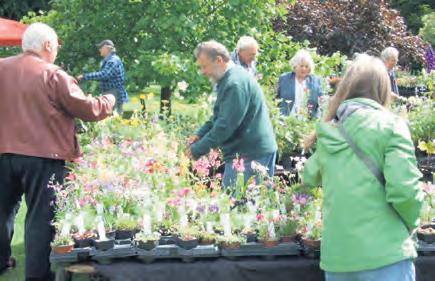
Rare Plant Fairs are back for 2023 with an expanded programme of 15 specialist plant fairs, held in unique and prestigious gardens across the country. The popular events are attended by specialist nurseries from across the country, all experts in the plants that they grow, offering a wide range of interesting and unusual plants.
The season starts with The Bishop’s Palace, Wells, on Sunday, 19th March, from 10am to 4pm. This venue lies at the heart of the historic city of Wells and is a place full of secrets, stories and stunning scenery, and home to the Bishops of Bath and Wells for 800 years. There are 14 acres of gardens to explore, including the beautiful wellpools from which the city takes its name.
For complete details of all the events, including a full list of exhibitors visit www.rareplantfair.co.uk
Who says allotments are just for older gardeners? Teenager Daniel Rose has become an inspiration for the really younger generation of plot holders as he grows vegetables and fruit on his Somerset allotment - and he’s the youngest plot holder, who enjoys being among the ‘regulars’.
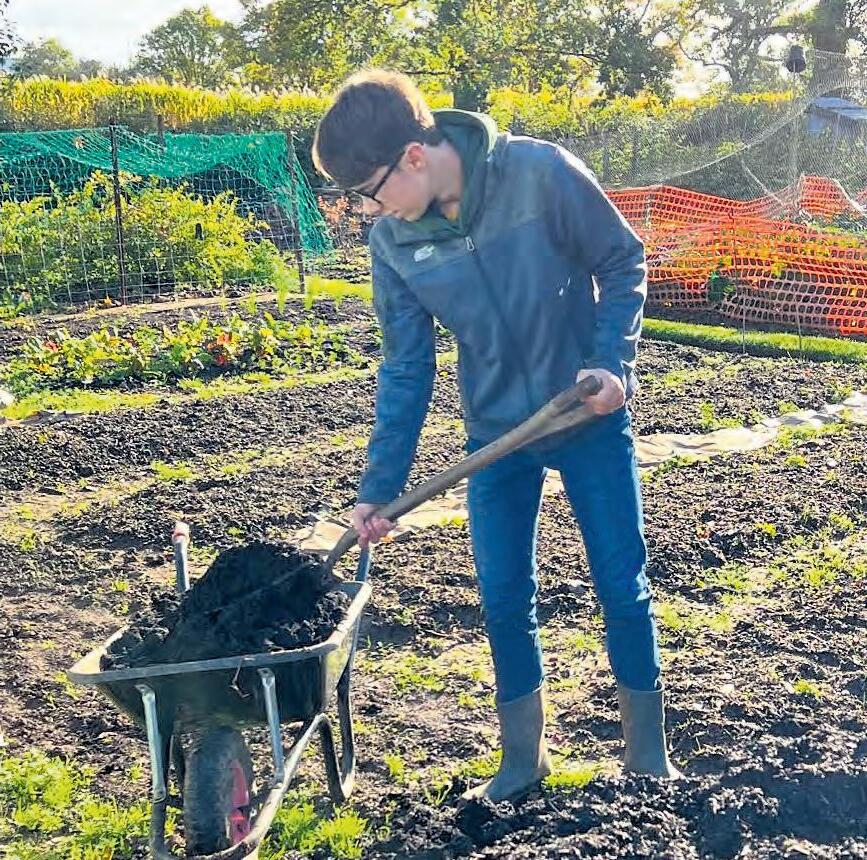
It all started during the first Covid lockdown in 2020. Daniel Rose was aged 13 when he started gardening on raised beds in the family garden. Now he is among ‘the regulars’ at the allotments near his home in Taunton, with a line of compost bins he built, and a polytunnel growing vegetables and salads.

He is certainly the youngest allotment holder at the Whitmore Allotments. And he wants to start on a second plot. Until he is aged 16 his mother, Sarah, is the official plot holder. He can reapply when he reaches that age, and then he will probably apply for that second plot.
During the first lockdown in the pandemic the committee at Whitmore Allotments decided that due to overwhelming demand the waiting list for plots would be closed for a short period and then be started up again.
“This worked in my favour”, said Dan, who attends Castle School in Taunton. “It meant that I was near the top of the list and didn’t have to wait long for a plot.”
The plot he was allocated to is in a good position, having plenty of sun all day, but sheltered by trees around the allotments. The plot was overgrown with couch grass and weeds, but he started to clear it, with the help of his Dad, Steve, and his Mum. Then he put down a lot of heavy black plastic on the grass at the front of the plot, and eventually could start sowing. His first crop, potatoes, was to break up the soil, and he has used compost bought from Somerset Waste to enrich it.
He built an impressive line of compost bins, eventually reusing the black plastic to line the bins, and used recycled materials, including the wood of the raised beds that had been in the family garden at Clifford Avenue, Taunton. Dan is the middle one of five brothers and an older brother helped with angle grinding the corrugated metal fronts to the bins.
“You can’t grow anything in a shed”, he said. Dan sits his GCSEs this year and one of the subjects he is taking is Food and Nutrition – so he is growing ingredients and putting them into recipes for the table.
Last summer he grew brassicas, tomatoes hanging from the metal top of the polytunnel, pumpkins, salads, kale and sweetcorn. Sweetcorn proved to be the favourite – “It was so sweet and fresh”, he said.
“He feeds us and the street,” says Sarah. She said that they would have to “prize him out” of the plot on summer evenings, he’s so involved.
“He reads up on everything, finds bargains online and plans ahead,” she said.
To finance what he has had to buy, particularly the materials, tools, compost, the polytunnel, and the all important seeds, he mows lawns for neighbours, and does some jet washing.
“The lawn clippings I take away to put in the compost bins. I can put a trailer on my bike, but just a bucket on the front of the bike sometimes is enough.”
He has planted companion plants such as marigolds, but also basil which he allows to flower as it attracts the insects away from the vegetables.
Dan’s grandfather Michael helped him when he put up a small polytunnel, getting the structure on a firm metal base. Now rows of veg and salads grow on one side, with the potting bench on the other, again made from recycled wood. There’s no space for a shed as only one structure is allowed, and Dan thought a polytunnel more useful as he could grow more crops.
Dan has researched the no-dig method; he prefers minimal disturbance of the ground rather than no digging at all, and he has found this works well.
He works to a plan, and has one for this coming season, which has a wide range of vegetables and salad crops, to yield red and yellow onions, purple sprouting broccoli, parsnips and carrots, swede, leeks, beetroot, sweetcorn, a


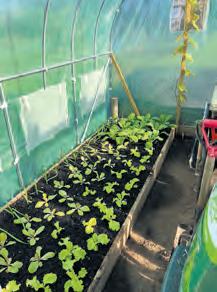
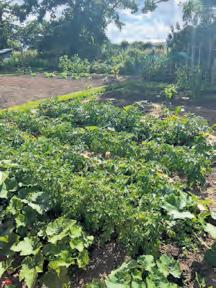
row of peas and of runner beans interplanted with lettuce, with cropping and planting throughout the season. The polytunnel will be planted with tomatoes, melon, and towards winter, garlic and lettuce. There will also be some flowers and seed saving plants at the edge of the plot. If he gets a second plot it will give him the opportunity to grow more fruit, including soft fruit such as raspberries, and he is also thinking about planting small ‘step-over’ apple trees.
Perhaps a career in horticulture beckons but he says that “I would want to always be able to grow what I eat, not just grow for other people.”
Dan is very glad to have the plot where it is, surrounded with the ‘regulars’ who have helped and encouraged him. He is by far the youngest working on the allotments but his knowledge is already very impressive, as is his commitment.
“
To finance what he has had to buy, materials, tools, compost, the polytunnel, and the all-important seeds, he mows lawns for neighbours, and does some jet washing”Dan’s grandfather helped him when he put up a small polytunnel



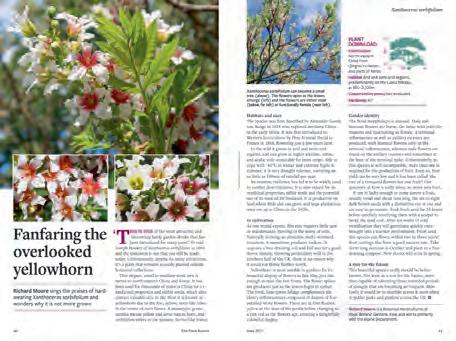


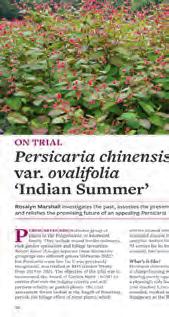

































COUNTRY GARDENER
1998-2023
1998-2023
A year of great Country Gardener competitions starts off in style with the opportunity to win a truly wonderful traditionally made Cotswolds greenhouse.
We are thrilled at Country Gardener magazine to be celebrating our 25th anniversary in 2023 and want our readers to enjoy the celebrations with us as much as we can.
And that is why we have organised a whole series of exciting competitions for readers running through all the ten issues of the magazine planned for this year.
Each magazine will have a stunning high value prize on offer - and we start the new season with one of the best - a high quality traditional timber greenhouse made in the Cotswolds by Gabriel Ash.
The handcrafted greenhouses are the only timber greenhouses endorsed by the RHS and end up as a focal point of many gardens. The prize to be one is the popular Portico greenhouse from the Gabriel Ash range and will include full installation costs positioned in your garden to your request.
The Gabrielle Ash greenhouse is a real statement for any garden. The put their faith in traditional joinery techniques such as mortise and tenon joints to give the greenhouses strength and integrity.

It boasts a central porch entrance to the greenhouse, maintaining the narrow glass panes, steep roof pitch and hand turned finials.
Starting at a rather modest 11ft 8in x 14ft 2in, is perfect for a busy productive garden.
All of the structures are made from 100 per-cent Western Red Cedar, which means you will never have to treat the wood if you don’t want to. Why? Cedar is a very porous wood that’s packed full of its own natural oils. This allows the timber to protect itself from the elements
and release moisture very quickly. So as long as your structure is kept on a solid perimeter base you won’t have to deal with the tedious staining and protection you’ll have to endure with most other timber garden sheds!
Each of our structures are single glazed with three mm toughened safety glass. This allows heat to better leave the greenhouse when it gets too hot whilst the timber framing retains the warmth naturally during the cold seasons, giving your plants an ambient environment where they can thrive.
If you would like to win this amazing greenhouse then all you have to do is answer the following question...
Send your answers on a postcard to Gabrielle Ash Competition, c/o Country Gardener, Mount House, Halse, Taunton TA4 3AD. Entries close on Friday, 24th March.
The competition winner will be informed by Friday, 31st March and published in the May issue of the magazine.






It’s almost time to dust yourself down and start to enjoy the start of spring to the full. Many of us tend to prefer some sort of hibernation during the long winter months but now there are genuine signs with longer, lighter days and with the temperature starting to climb that spring isn’t’ too far off. The clearest signs are the number of garden venues who are now starting to reach out to visitors with their new season offerings- everything from daffodil days to trips to Cornwall to garden visits, days out at an NGS garden or even thoughts of a garden trip abroad.
So, with that in mind we’ve a few ideas as you start to plan those great days out.
Daffodil Day on Sunday 19th March, at Hartland Abbey is a lovely opportunity to put winter behind and enjoy this beautiful valley before the visitor season begins. It is a great chance to see all the spring flowers and shrubs and explore the woodland walks leading to the Walled Gardens and the Atlantic cove at Blackpool Mill. Daffodils and narcissi, many hundreds of years old, camellias. magnolias, hellebores, chinodoxia and much more will be out. It’s a lovely treat for dogs too, and children to explore all the winding paths and look for the peacocks and spot where they saw Darrell, Gwen and their friends in Malory Towers on the TV. Homemade refreshments are available! The house will be open from 12pm to-3pm.
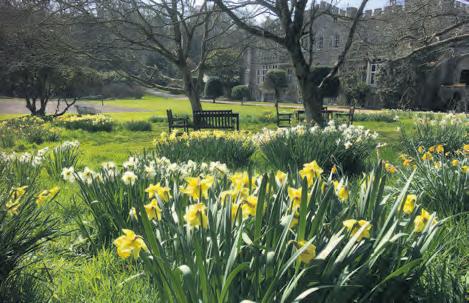
Hartland, Nr. Bideford EX39 6DT Tel: 01237441496/234 visit www.hartlandabbey.com
Boscrege Caravan and Touring park in Cornwall is a peaceful and picturesque park, set at the foot of Tregonning Hill, Godolphin National Trust and amongst tranquil Cornish lanes in an area of outstanding natural beauty.
The park, open all year is close to the Cornwall coast and a few minutes’ drive to Praa Sands, one of Britain’s nicest beaches. So, if you are looking to take a luxury holiday (doggie friendly with dog friendly homes and on-site designated fields for the dogs too) in Cornwall in a either a self-catering caravan or lodge, touring or even purchasing your very own holiday home then contact Boscrege Caravan and Touring Park.
Boscrege Caravan Park, Boscrege, Ashton, Cornwall TR13 9TG
Tel: 01736 762231
www.caravanparkcornwall.com
SMALL GROUP TOURS up to 14 people only
Italian Lakes, Tuscany, Rome area and Amalfi Coast
Visit some of Italy’s most famous gardens in a small group with the expertise of local garden guides.

• Maximum 14 people per group
• 6 nights
• Flights and luxury coach transport
• Included local garden guides
• Stay in 4 star and 5 star hotels
• Departures in May, June and September
• Full financial protection for all holidays
From £2,980 per person
Italian Lakes, Tuscany, Rome area and Amalfi Coast
Visit some of Italy’s most exquisite and gardens. Tailor-made arrangements.
• Flexible departures & durations
• Hotels, flights & transport included
• Local transport by hire-car or by car with driver
• Detailed garden notes provided

• Local garden guides for personalised visits can be arranged
• Full financial protection for all holidays
From £1,570 per person
www.expressionsholidays.co.uk
Founded 1989
GARDENING VENUES ARE STARTING TO REACH OUT TO VISITORS WITH SPRING IDEAS FOR GREAT DAYS OUT - THE BEST INDICATION YET THAT WINTER IS COMING TO AN END
Shhhh! Meudon’s the word. Discover Cornwall’s best kept secret - a hidden valley hotel in subtropical gardens leading to its own secluded beach.
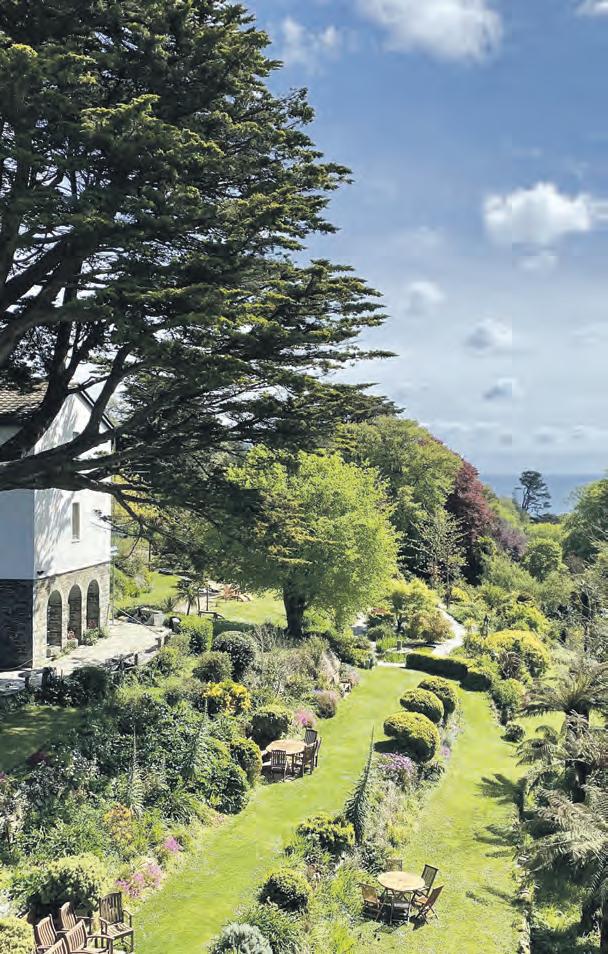
For

The stunning hotel is a stylish retreat boasting nine acres of sub-tropical gardens, stunning sea views, 29 bedrooms and a treatment room. Award winning Restaurant Meudon, The Drawing Room and Freddie’s Bar are open to all, whether you’re staying at the hotel or simply passing by. All menus feature a variety of dishes and are created using Cornwall’s bountiful larder.
A stay at Hotel Meudon this spring will offer you time to unwind, whilst enjoying stunning surroundings and top-quality service.
For special offers and bookings go to meudon.co.uk
Visit Lady

Departures on 16th June and 1st September. Prices from £3,690 per person.
DAFFODILS AND SPRING FLOWERS
Sunday 19th March 11am - 4pm
Come and enjoy our beautiful historic daffodils, spring shrubs, bulbs and wildflower walks to the beach.
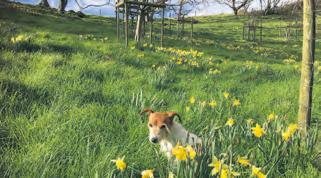
* Dogs really welcome *
* Delicious light lunches & cream teas *

* Special rate: Adults £8 Children over five £1 * House open 1pm £4 * 2023 Season 2nd April - 5th October Sunday to Thursday 11am - 5pm (House 2pm - last adm. 4pm)
For more information and events see www.hartlandabbey.com
Hartland, Nr. Bideford EX39 6DT 01237441496/234

CARAVAN
BOSCREGE CARAVAN & TOURING PARK
THE MOST PICTURESQUE CARAVAN PARK IN CORNWALL
With a welcoming atmosphere and set in 12 acres of Cornish countryside only two miles from the beautiful sandy beaches of Praa Sands, Boscrege Caravan & Touring Park is the best place to enjoy your Cornish holiday.
Each of our luxury holiday homes comes with a private garden and Wi-Fi. Perfect
for families and couples, we are open all year, and offer seasonal pitches.
We offer the following:
• Designated dog walking fields
• Pet friendly accommodation

• Comprehensive storage
• Luxury holiday homes for sale 01736 762231
• enquiries@caravanparkcornwall.com
www.countrygardener.co.uk 27



Forde Abbey stands out as one of the most spectacular award-winning gardens in the south west. A 900-year-old Abbey set within 30 acres of varied gardens with a spectacular display of 50,000 tulips.
Naturalised wildflower lawns, topiary-lined vistas, herbaceous borders, bog garden, kitchen garden and lakes with meandering pathways and plenty of seating to admire the views and the highest-powered fountain in the country. A gift shop, pottery, specialist plant nursery and coffee shop make it a full day out.
The gardens open from 1st March through to 31st October, 10.30am – 5pm (last admission 4pm). The house is open from 1st April to 31st October, 12pm onwards (last admission 3.30pm) Tuesday to Friday, Sunday and Bank Holiday Monday.
Forde Abbey & Gardens, Chard, Somerset TA20 4LU www.fordeabbey.co.uk

The National Garden Scheme gives visitors unique, affordable access to exceptional private gardens and raises impressive amounts of money for nursing and health charities through admissions, teas and cake. And the NGS is delighted to welcome visitors to a new year of wonderful garden openings. With over 3,500 gardens to visit this year, starting with the annual Snowdrop Festival there are plenty of garden visits to plan and to look forward to in the months ahead. With fresh shoots emerging and early bulbs in flower, it’s a great time to get out and enjoy visiting a wonderful garden this spring. Find a garden open near you. ngs.org.uk

Spring is the perfect time for gardening, but it can also be a time of frustration for gardeners who find their plants and flowers plagued by pests. Pests such as aphids, mites, and slugs can wreak havoc on your garden and destroy all your hard work.
If you act before the growing season begins it can save you time, money, and heartache. I’ve already spent hours on the Exeter allotment trying to get an early start.
By preparing your garden in advance, you can create a pest-free haven for your plants and enjoy a beautiful, thriving garden all season long. That’s why I’m proud to share tips on how to protect your garden and keep pests at bay. To start with, I believe the best thing any gardener can do to get ready for the new season is to use garlic all over the garden.
Garlic companion planting can help keep pests and diseases away from vegetables, fruit, and even flowers, including roses. Its pungent aroma actively repels many pests that can attack crops, and it produces a natural fungicide in the soil. Nearby plants can absorb this into their roots and it protects them from fungal infections.
Find your perfect garden: ngs.org.uk


Companion planting is an effective way to organically control pests in the garden and supplement both growth and flavour in some edibles. Utilising companion planting also reduces the need for using chemicals in the garden. One of the main advantages of companion planting with garlic is the pungent smell the plant emits. Whether you are growing hardneck or softneck garlic, it is a natural pest and fungus repellent and that makes it a fantastic companion plant in the garden.
SO, LET’S DEAL WITH THOSE PESTS:
APHIDS: Small, soft-bodied insects that suck the sap from plants and leaves, causing yellowing and wilting. Pre-season prevention steps: Remove any plant debris and weeds near the garden, plant aromatic herbs such as basil, and introduce natural predators like ladybugs to your garden.
MITES: Tiny spider-like pests that spin webs on the underside of leaves, causing yellowing, leaf drop, and stunted growth. Pre-season prevention steps: Keep the garden free of debris, use a strong jet of water to wash mites off the leaves, and use neem oil as a natural deterrent.
SLUGS: These as we all know that feed on leaves and stems, causing holes in the foliage and leaving a slime trail. Pre-season prevention steps: Keep the garden clean and dry, eliminate hiding places like piles of leaves and stones, and place copper strips around the garden to create an electric barrier that slugs can’t cross.

CATERPILLARS: Larval insects that can defoliate entire plants in a matter of days. Pre-season prevention steps: Keep a close eye on new growth, handpick caterpillars and eggs.
SNAILS: Soft-bodied creatures that feed on a wide variety of plants, causing damage to leaves, stems, and fruits. Pre-season prevention steps: Keep the garden free of debris and remove any hiding places for snails and slugs, such as overturned pots or rocks, and use beer traps to lure them away from your plants.

CoirProducts.co.uk provides a range of natural, biodegradable, and peat-free coir-based products for all types of growers and gardeners. Ethically produced and sourced, all products are manufactured to meet the highest industry standards.

Coir is a sustainable waste product of the coconut industry. CoirProducts.co.uk is directly involved in manufacturing its products, through its partner organisation in Sri Lanka. Salike Limited has been in the industry for decades, mainly supplying coir-based products in bulk. Having established its online retail shop, CoirProducts.co.uk continues to make a range of coir products accessible to anyone, introducing first time coir product varieties to UK gardeners.
Every step of the production process is closely monitored, ensuring that ethical practices are followed throughout the process of producing and sourcing the products. Coir products are made with the natural fibrous material extracted from the husk of the coconut tree, and the process followed in manufacturing is completely natural. The coconut tree and its fruit (the coconut) is one of the most versatile out there, with different parts of the tree and fruit used for nutritional and medicinal purposes.
The coconut consists of an inner coconut kernel, and the outer husk, which contains fibres. When the coconut is harvested, the coconut husk is processed, and the fibre/pith is extracted. The long fibres that are extracted are used to make various household items such as ropes, brushes, geotextiles, and floor mats. The remaining dust and short fibres (known as coir pith) used to be discarded. In the late 1940s, a soil scientist named, E. P. Hume writes how this coir dust type waste product resembled a type of horticultural peat.
Coir discs can expand to the required size and are ideal for seeding, rooting and for hydroponic growing

The coir pith (or coir potting mix) is soaked in water to lower its salt content and achieve a neutral pH level. It is then dried naturally, under the sun, which helps reduce the excess moisture content. Such natural processes help create the ideal growing conditions that coir is known for. The dried coir pith is compressed into coir potting mix (also known as coco peat coir peat) blocks, bales, bricks, or discs. This coir pith is also naturally processed to make various other coir products such as coircoins, growcubes, coir discs as per the specifications of the products.
With the raw material extracted from the husk of the coconut, coir is completely natural and organic, while no chemicals and harmful material are used in the process of manufacturing. Coir products.co.uk also offsets its carbon in transporting goods to the UK. www.coir products.co.uk/shop
Email: hello@coirproducts.co.uk

RHS Chelsea Gold Medal Winners
RHS Chelsea Gold Medal Winners
OUR ONLINE SHOP IS OPEN FOR BUSINESS AS USUAL
-
Heucheraholics Sales Area
-Sun
• Now is a great time to get your gardens ready to add some Glorious Heuchera technicolour
• We have a the best range of Heuchera’s in the UK including many of our own introductions
• Heuchera’s for the garden and for containers and baskets
• Heuchera’s for Fabulous foliage and some for Fantastic flowers
Heuchera ‘Wedding Bells’

The Nursery Open Dates for 2023 For more information on the Open days please visit our website www.heucheraholics.co.uk
Find us on Facebook, Instagram and Twitter
Boldre Nurseries, Southampton Road, Lymington, Hants SO41 8ND TEL: 07973 291062 / 01590 670581

www.heucheraholics.co.uk
BUY ONLINE ANYTIME!
WA16 9RA
Telephone: 0800 046 7443 sales@chrysanthemumsdirect.co.uk
2023 Catalogue available online now or, contact us to receive your FREE paper copy.
The widest range available in the U.K. with over 450 cultivars, including a choice selection of hardy garden (Korean) varieties, plus many others suitable for the garden or exhibition.

www.chrysanthemumsdirect.co.uk


ONE OF THE SIGNIFICANT ASPECTS BEHIND THE GROWTH IN POPULARITY OF COIR PRODUCTS IS THAT GARDENERS ARE BEING REASSURED THERE IS MINIMAL HARM ON THE ENVIRONMENT IN PRODUCING AND USING THEM.
We sort of persuade ourselves that March sees the end of winter and that spring is on the way, but it can be very cold this month so keep an eye on the weather forecast and try to be patient. The other good news is that clocks also go forward this month, so longer daylight hours help plants to really get under way.
Weeds will be growing even more strongly than your plants during these weeks, so keep on top of them before they can get a hold. Digging them up with a hand fork is the best idea, as you can get all the roots out. Reserve hoeing for dry weather, as weeds can re-root if the soil is moist.


While most varieties of potato are planted in April, earlies, such as ‘Rocket’, you can get some ‘earlies’ in the soil during March. Plant them about 40cm apart in rows 45cm apart in the ground. Bury the potato just below the compost surface. As shoots grow, cover with more compost until the pot is full. Cover the young plants with garden fleece if frosts are forecast. Make sure you water the pot regularly, so the compost is moist but not wet. By late June or early July, your potatoes should be ready to harvest. Check they’re ready by putting your hand into the pot and gently feeling for the tubers. If they feel big enough, tip out the contents of the pot, otherwise leave them to continue growing.

Hardy annuals can be sown in trays indoors or under glass now but unless you live somewhere mild it’s a bit early for half hardies.
There’s nothing more depressing than seeds that fail and these should deliver: honeywort Cerinthe major ‘Purpurascens’, cornflowers, borage (great for bees and decorating drinks) and viper’s bugloss (also great for bees and for butterflies).
If seed trays have been stored somewhere outdoors or weren’t washed when you put them away, give them a good wash and brush up with hot soapy water and don’t think you’ll save money by using old compost or earth – you’ll regret it when seeds shrivel and die.
Use large trays, fill with seed compost to near the top and water with a can with a fine rose or stand in a sink until the
Bring them into growth in a light, frost-free place and they’ll get off to a great start, ready for planting outdoors after the danger of frost has passed in late spring. You can also use some of the shoots to make cuttings later on.
The most effective way of improving the soil in established borders is to mulch the surface with a three cm-layer of organic matter, such as garden compost. It will also help to suppress weeds and trap moisture in the soil. If your heap doesn’t produce enough compost to mulch the whole garden, it’s worth contacting your local council to see if it’s possible to buy the compost that’s made from the green-waste collections. Mushroom compost (though not for acid-loving plants, as it contains chalk) and composted bark make good alternatives and can be bought online.
Before you start, make sure you have thoroughly weeded the bed and that you have sufficient mulching material – this could be leaf mould, compost, well-rotted manure or bark chippings. Always leave a gap around the stem of plants.
Summer bulbs, such as alliums, agapanthus and cannas, should be planted in spring, when the soil is just beginning to warm up. Pot individual bulbs into containers of multi-purpose compost, making sure that each pot is at least half as wide as the pot. Water sparingly until the bulbs start to shoot into growth, then water each time the compost is dry. Earmark a final planting site for your bulbs that is free-draining and south-facing. If soil drainage is poor, the bulbs can rot and lack of sun can mean lack of flowers.
tray’s absorbed moisture. Don’t use water from the butt as this can lead to disease and try to use lukewarm rather than freezing cold water.
Sprinkle over seeds as sparingly as you can manage and use a sieve to sprinkle a light layer of dry compost. Sit somewhere light and neither too hot nor too cold. You want an even temperature around 18°C or 64°F. Some people like to cover the tray with glass or a clear polythene. You should see results in a week or two.
Once the seeds germinate remove any covers or you’ll get condensation and rot. Whilst you are waiting watch that the compost doesn’t dry out but don’t overwater either.
It’s your last chance to plant out summer flowering-bulbs like lilies, as well as any forced bulbs you might have had indoors over winter, such as daffodils and hyacinths, if you haven’t already.
Mix grit into each planting hole if the soil is heavy. Spreading a mulch of good garden compost or wellrotted manure over the soil a month before planting will help improve thin, poor soils, boosting fertility and improving drainage.


If you haven’t already done so give roses their first feed of the year. Use a tailored rose feed as they need the correct mix of nutrients. And don’t think you’ll be doing them a favour by over feeding. You’ll end up with too much sappy soft growth that makes them less able to withstand pests. Feed again in April/May and, if you want, they can have a final feed in July but no later or that soft wood will make them vulnerable to winter cold.
It may seem a bit early, but March is really the time to sow tomatoes for growing indoors. Wait until mid-month and then sow the tomatoes you’re planning to grow indoors, pricking out the seedlings into individual pots later. Plants for growing outdoors are best sown in April or they’ll be ready before it’s warm enough to plant them outdoors.
This is the key moment for dividing clumps of perennials because it’s possible to break off the outer, vigorous pieces and replant them straight back into the soil with a dusting of blood, fish and bone. Only select clumps with sparse middles, or ones with perennial weeds, or clumps that need reducing in size. Lift them with a fork and most will pull part into hand-sized pieces (others may need chopping with a spade).

When you see growth starting again it’s time to check your houseplants. Some may just need a tidy up, clearing away dead leaves and debris and a bit of a prune to get it back into shape. If roots are appearing through the base it’s a sign, they need repotting. If you can’t see the roots, but it’s a while since they were repotted, try to loosen the plug of earth out of the pot and see if the roots are circling as if desperate to get out. If so it’s time to repot.
Ideally, water plants a few days before repotting. Use washed pots, one size larger than the existing pot, and fresh clean potting compost – whichever is correct for the plant. Some plants like a lighter mix so mix up the soil for each plant using a combination of potting compost, sand and perlite as necessary.
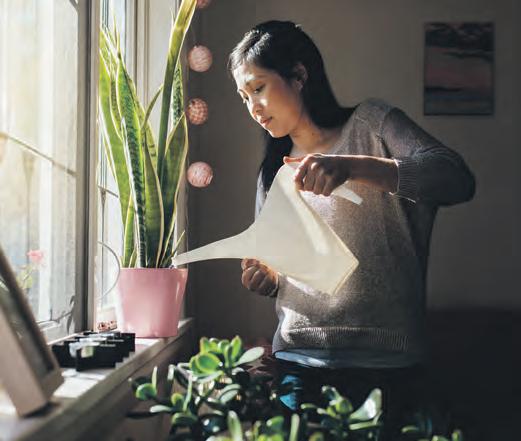
You can add water retaining gel granules if you like and some plants benefit from a topping of grit. If the plant’s just not going to come out of the pot you can try to eke out a little more time by top dressing. To do this carefully scrape off an inch or so from the top of the old soil, avoiding damaging the roots, and replace with fresh new potting compost. Water pots well and drain. Avoid putting newly repotted plants in direct sunlight but let them recover slowly. After a week or so they should be nicely settled in.

Hardy crops can be planted out in March, although those in the very north of the country should wait until the end of the month or even early April, depending on the weather.

Hardy vegetables include broad beans, peas, spinach, garlic, onions, radish, Swiss chard and beetroot. Sow in short rows at weekly intervals to ensure a steady crop over summer and autumn.

March is a good time to plant a summerflowering clematis. These climbers race away now and those that flower after Midsummer’s Day (21st June) produce lots of smaller flowers from top to toe. Classic varieties include ‘Étoile Violette’, ‘Polish Spirit’, and ‘Betty Corning’. Pruning’s easy, just cut them back to the lowest buds and they won’t suffer from wilt.
March is one of the busiest months for pruning with a wide range of shrubs and other plants requiring their annual prune.

Timing is of course everything when it comes to pruning.
By now it is too late to prune apples, pears and late flowering clematis. But climbing roses, hybrid teas and floribundas need a March pruning and the sooner the better, so they don’t waste their energy growing leaves which are about to be lopped off. Borderline perennials such as pestemons and phygelius can also be pruned.
Tender evergreen shrubs such as variegated griselinia are best pruned now. The new growth triggered by the pruning should not be damaged by hard frosts. Evergreen edging and topiary can be finished now to create a smooth finish.
GRAPEVINES
The sap pressure tends to be very high in March so if you prune them they will bleed profusely - something which will either damage them or possibly kill them.
RAMBLING ROSES
Unlike climbing roses these bloom on stems produced the previous year so prune and then re-train then straight after flowering.
MEDITERRANEAN SHRUBS
Delay pruning the more tender forms such as French lavender and hyssop until May. This ensures that the subsequent re growth won’t be badly damaged by frosts.
BUDDLEJA ALTERNIFOLIA
Unlike the more popular B.davidii, these varieties bloom on last years’ wood so prune them after flowering in the summer.
Soil is the backbone of your garden. Care for it well and it will not only grow you beautiful flowers and vegetables, it will provide a wildlife habitat while storing lots of carbon and water too. Gardeners aim to manage the levels of soil organic matter to get acceptable plant growth, which will typically mean that organic matter levels should be between three and six per-cent. The main way they do this is to add organic matter. Because the effects of organic matter are so pronounced it is feasible to add sufficient organic matter to improve soils in a way that would be very difficult to add, say clay to a sandy soil and vice versa. Because clay and sand are not very effective in small quantities enormous amounts would have to be mixed into the soil to make a real difference.
Natural soils contained 30 to 40 per-cent more organic matter than they now contain under cultivation. Good garden plants can be grown at lower levels of organic matter than found in virgin soils, but once organic matter levels fall to below 2 per-cent the impact can be severe. A fall in soil organic matter of 0.5per-cent can reduce, for example, nutrient holding capacity by 4 per-cent of even fertile soils. Happily there is no need to test soils as it is relatively easy to judge whether a soil is manageable and add more organic matter if you encounter difficulties in make seed beds, planting or if the soil dries out in summer. With experience it is quite feasible to maintain
CoirProducts.co.uk (of Salike Limited) provides a range of coir potting mix for ecoconscious growing. Natural, biodegradable, and peat-free, all products are ethically produced and sourced, and ideal for growing plants and crops.


CoirProducts.co.uk coir potting mix is available in a range of sizes of compressed blocks, bricks, and discs. The popular 5kg coir potting mix block gives 75L of coir when hydrated, while the 3kg block provides 40litres of coir. CoirProducts.co.uk coir discs range from 3.5cm (100ml of coir) to 18cm (eight litres of coir). In addition, CoirCoins come with a biodegradable cover, making them unique. Available in four sizes, roots grow through the coir coins, so there is no transplanting shock later on.
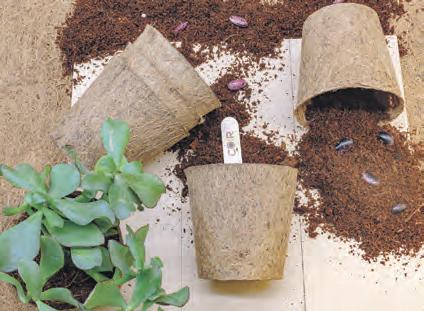


‘QR’ (Quick Return) compost activator has been helping gardeners make compost and improve the health of their soils since the early 1930’s. Invented by Maye Bruce, one of the founder members of the Soil Association, ‘QR’ became popular all over the world until the 1970’s.
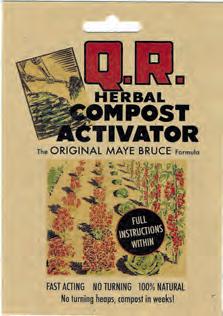
Made from a blend of dried herbs, ‘QR’ speeds up the decomposition of organic matter. There is no turning required and compost can be made in as little as 4 weeks. It is suitable for use with garden or kitchen waste in all types of compost bins.

‘QR’ is simple to use - the ‘QR’ powder is added to water to make a solution that is applied to the layers of the heap during its construction.

Available from Gardener’s Cottage Plants at £6.25 inc P&P.

www.gcplants.co.uk Tel 01434 672594
We all know that compost is essential for healthy plants, but what makes green compost a more sustainable option? Eco’s compost is a perfect example of synergy and the circle of life. Green waste from Dorset gardens is brought to our site and goes through a stringent open windrow composting process for up to 12 weeks. This process creates top quality green compost to go back into the ground, nourishing the soil and producing lush plants. Green compost is a valuable source of organic matter which helps to improve soil structure, increases moisture retention, and provides nutrients for plants.
From soils and composts, to decorative bark and mulch, Eco provides quality, sustainable landscape products.


www.thisiseco.co.uk Tel: 01202 593 601


Composts and growing media can be quite variable in how effective they are. Home made garden compost is usually fine as a thick mulch in Spring and Autumn. Many bought in composts or growing media aren’t designed to mulch, they are designed to grow plants on in pots. If you are growing on in pots why not add active biology to the compost, it mimics what nature does best in a diverse woodland situation. Applying rootgrow mycorrhizal fungi to the plant root when potting on will confer a lifetime of benefits. If using Peat Free you may also want to seed the compost with After Plant for Evergreens when growing leafy plants or After Plant for Roses when you are growing fruit, flowers and non-leafy vegetables.
After Plant will seed your composts with a unique bio-fertiliser that will make the compost more manageable, consistent and reliable.

Empathy products represent the future of plant nutrition being natural, tailored for use, modern and highly effective.
www.rootgrow.co.uk

A new gardening season and we welcome a postbag of queries, gardening questions and problems from Country Gardener readers. If you have something you would like expert help in the garden with, then email us at editorial@countrygardener.co.uk

I am a very keen gardener but in recent years the pleasure of creating my own compost has been damaged by the number of rats the whole area attracts. Last summer I often counted half a dozen, and it was unpleasant. Is there anything I can do?
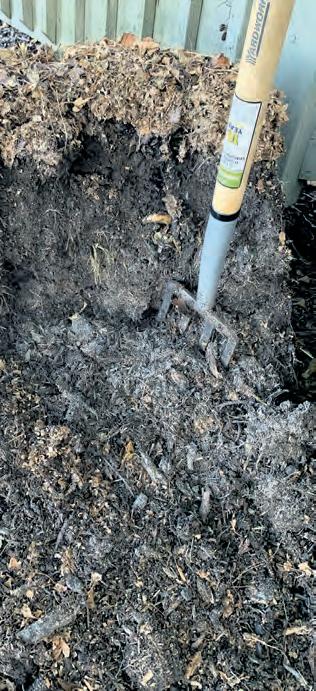 Ian Whitehead Poole
Ian Whitehead Poole
The worry of attracting rats to a composting area is a concern for many gardeners. There are thankfully things you can do.
1. Getting the ratio of greens and browns right in your compost heap. Paying attention to the layering will help ensure your compost is nutrient-rich without inviting pests. A ratio of four parts ‘browns’ to one part ‘greens’ is the best option for a compost heap. The greens include nitrogen-rich materials such as grass clippings, food scraps, coffee grounds and tea bags, while browns are high in carbon i.e., dry leaves, paper, branches and pine needles. Adding too many greens, typically food scraps, will draw attention to rats searching for food.
2. Too much water causes the compost to become anaerobic, which means there is not enough oxygen in the soil. Anaerobic compost heaps often have a foul smell, which attracts rats.
3. One of the easiest ways to prevent rats from creating a nest in your compost heap is by ensuring that they can’t access it. An uncovered compost heap will emit odours that will be especially attractive to rats looking for food.
4. Not only is regular aeration great for your compost heap, but it will also help deter rats. These are usually shy creatures, who will seek out a spot where they can be undisturbed to make a nest. A pile regularly disturbed will be avoided by rats.
5. Compost heaps naturally draw attention from pests and insects, so it’s always best to keep your compost as far from your home as possible.
If the heap is located too close to your house, rats may use the compost heap for shelter and then look for food and water in your home. A compost heap close to your house can also provide a source of drinking water for rats and other pests.
I recently emptied a large compost bin on to a new raised bed area- however I did not find any worms in it. Does this mean the compost is unhealthy?

Charles Yale Swindon
Worms will only be present in soil if there is a supply of organic matter for them, such as dead leaves, decaying plant material or manure. The soil in the compost bin could have lacked organic matter or it may have become too saturated with water or too dry for worms to be happy. Also, if it has been in there for a while there could be a lack of oxygen in the soil. Once the topsoil is spread back out in the open many creatures should start to inhabit it again.
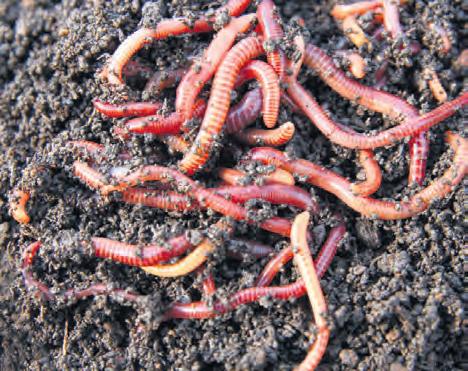
This spring our primary school will have a polytunnel for the first time so we are gathering together as much help as we can. Is there a rule of thumb when it comes to sowing seeds? Do we use seed trays and ‘prick out’ or cells then pot on? Also do we need to use vermiculite or just use the compost to cover?
Annie Wilson Bude
If you are dealing with larger, quick growing seeds such as sunflower, sweet pea, marigold, and calendula, then you can sow

I am looking to replace my turf as my lawn is not doing well due to the clay conditions and my dog peeing on it. I don’t want artificial grass or to slab the area.
Andy Morton BasingstokeReplacing with shrubs and effectively starting a whole new planting area is costly and time consuming. One option is to turn at least part of the lawn into a wildflower area. You don’t say how big your lawn is but wildlife areas are wonderfully rewarding and simple. And it doesn’t have to replace the whole lawn. Your poor soil might also in this case be an advantage. There are hundreds of wildflower meadow seed mixes available. They make a great lawn alternative. Simply strip off the turf, scatter the seeds and water in. You can choose colour-themed wildflower seed mixes, or mixes designed for wildlife. Look for varieties that include some meadow grasses too, which will give a great wildflower meadow effect.
I have access to lots of seaweed living where I do but I’ve never really worked out how helpful it might be in the garden?
 Anna Graham Bridport
Anna Graham Bridport
Seaweed will benefit your garden any time of year, but it is especially useful as a mulch to protect plants during hot, dry weather. It is a valuable source of fertiliser, mulch and organic pest control, all in one natural material and famously rich in beneficial trace minerals and hormones that stimulate plant growth. It is also high in carbohydrates which are essential building blocks in growing plants, and low in cellulose so it breaks down readily. Salt content worries some gardeners and if this is a concern just lay the seaweed out on a path and wash off some of the salt content.
them straight into cells in late spring and early summer. Because these seeds germinate and grow quickly, then they will need the space much sooner than smaller seeds would, and they will not be at such a risk of rotting. Most other seed will be best started in seed trays. Many need light to germinate so it is important to read the sowing instructions carefully. As a rule of thumb however, you can cover the seed with a sprinkling of vermiculite that is roughly equal to the depth of the seed, so larger seeds can have a good sprinkling, while very tiny seeds probably won’t need any at all.
I have moved into a new garden and testing the garden soil shows I need to raise the pH levels from a poor 5.0. How do I go about this, and will I get an instant solution?
Malcolm Taylor Cheltenham
This is easy but you will need a bit of patience. You just need to apply lime in granular form as ground limestone at a rate of four to five pounds per 1,000 square feet. Repeat in about six months; the season is unimportant since lime (calcium) won’t burn the plants. It takes a year or so to raise the pH to the desired level, and gradual application works better than one heavy treatment. Test the soil again in the autumn to check it’s working.
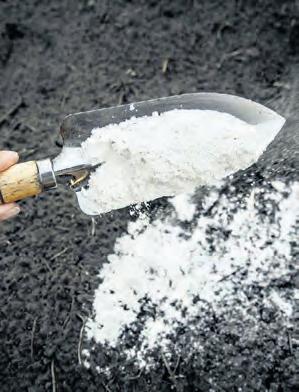
Do you have any advice on growing auriculas? I am struggling to get any advice.
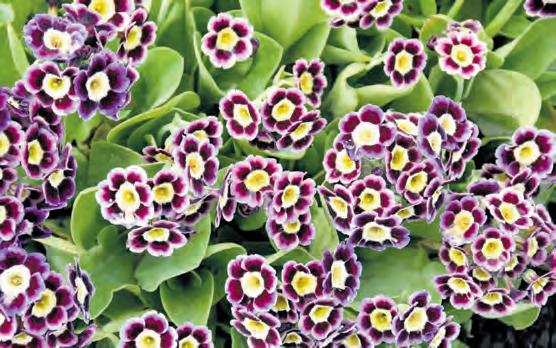
Pam Redstone Bath


Auriculas are such arresting flowers but are not the easiest to grow. They like cool conditions, but not wet. They like light, but hate baking sun. They are best grown in pots for good drainage with alpine grit on the compost surface to prevent rain from splashing soil back onto the leaves. Traditionally they are grown on slatted wooden benches with an open shade cover over them; these structures are called auricula theatres. They should grow happily in terracotta pots close to a house wall where they are overhung by the eaves. A wooden table on any aspect where the pots get morning or evening sun and shade for the rest of the day is ideal. Use loam-based compost and add extra grit. The single-flowered varieties are the easiest to look after.
I have a lovely Magnolia x solangeana in the middle of the lawn that has grown to eight foot high and has bloomed wonderfully for the past five years. I now realise it is in the wrong position; it blocks the view down the garden. I would like to move it to one side and further down the garden, is this possible?
 John Henderson Bristol
John Henderson Bristol
This is quite a large plant to move, and there is a risk involved. You must start preparing in spring. Use a sharp spade cut around the tree vertically to the depth of the head of the spade in a circle 45cm or so from the stem. Repeat this in autumn when the leaves have fallen and then create a trench around the tree using this line you cut as the inner wall of the trench. Start undercutting the tree aiming down slightly below the depth of the trench. Gradually work a heavy polythene sheet or polypropylene tarpaulin under the rootball of the tree, taking care to keep the soil and roots intact. Once the tree is on the sheet, use the sheet to drag the tree from the hole. Dig a hole large enough to accommodate the rootball. If possible, drag the plant and slide it into the hole without lifting. Aftercare is vital: regular watering, mulching with compost and firm staking are the secrets of success.

I want to grow some roses on a wall which is primarily in shade. Will it succeed, and most importantly will it flower?
Marlyn Corder Exeter
Most roses will grow and flower satisfactorily if they get more than four hours of sun a day. In shadier situations yellow roses are often the best bet so it is worth being a bit careful with the variety. The old climbing rose ‘Golden Showers’ is excellent for a shady wall. ‘Teasing Georgia’ is a lovely shade of golden yellow as is ‘Golden Celebration’ which makes a wonderfully full shrub rose or can be grown as a short climber. If you want a different colour try ‘The Generous Gardener’, a lovely soft pink with a wonderful fragrance. This is a versatile rose that can be grown as a shrub in the open ground, in a large pot or as a climber.

When should I cut back my perennials?
I fear again this spring my garden will have loads of ‘short’ tulips. Is there anything I can do?
 Amy Jackson
Amy Jackson
Minehead
Short almost incomplete tulips are really the result of a dry spring. So that’s the clue about what to do. If you want your tulips to have maximum size and performance, then water them about three weeks before they’re about to flower.
Pete Fairweather
Portsmouth
Most perennials are best left over the winter and cut back in March or early April.Waiting until early spring to cut them back is beneficial in several ways. Dried seed heads and grasses provide winter interest, as well as food and cover for birds and other wildlife. The tops of the plants provide extra protections for the crowns of the plants for the winter. It also gives the gardener a task to do on warm days in early spring when you want to be outside but the soil is too cold and wet to dig!
Ten issues throughout next year
Just £20 for a respected, knowledgeable and inspirational gardening magazine
The subscription costs just £20 and guarantees a 10 times a year magazine packed with information , gardening advice, local events.

You can select from one of our five editions of the magazine which is relevant to where you live.
Just fill in the form below and include your cheque for £20.
I would like to subscribe to Country Gardener for the next ten issues for £20:
This is a subscription just for me *
This is a gift (send next available issue) *
Please choose your region by ticking the box: Cotswolds * Devon * Dorset * Somerset * Hampshire *
Your details: Title Forename Surname Address Postcode Tel No
Details of gift recipient: Title Forename Surname Address Postcode Tel No

Complete this form and include a cheque for £20 made out to Alro Publishing Ltd and send to: Magazine Subscriptions, Country Gardener, Mount House, Halse, Taunton, Somerset TA4 3AD.
Remember to tell us which one of the five editions you would like to receive.
There’s some important things to consider when it comes to growing in containers - and the key ones are container material, size, colour, and drainage
Container gardening has now more appeal than any other area of gardening. It is however a part of the gardening market which is fraught with problems and errors which can make it seem hard, unrewarding work.
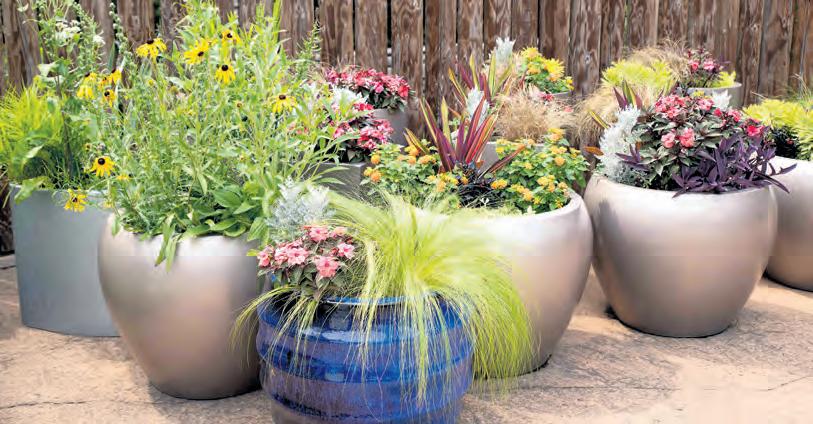
There are headline problems with container gardening. Perhaps the most obvious is understanding and remembering that containers can dry out easily so need watering and feeding more frequently. Only small amounts of vegetables can be grown in containers, so match the size of the crop to the container.
The drainage problem
There is one essential factor you cannot ignore – drainage.

Most plants, especially those commonly grown in pots, don’t like soggy soil. They need water to drain away from the soil and out the bottom of the pot to stop excess moisture from accumulating around the roots. When moisture builds up in containers due to lack of drainage, the limited airflow essentially suffocates the roots. This also leads to fungal growth that can cause root rot, a deadly condition that is tough to fix once it sets in.
Unfortunately, a layer of gravel at the base of a pot or even careful watering cannot fully replace drainage holes. Whether you’re buying a new container or recycling an old one, always make sure there is at least one drainage hole at the bottom.
One of the great benefits of growing plants in containers is that you can have complete control over this vital component of plant health. But, that also means there is plenty of room for error.
The soil mix you choose should be tailored to the plants you want to grow. Moistureloving tropical plants will need a mix amended with compost and peat moss or coconut coir to combat quick-drying soil in containers. Plants grown in containers require a well-drained growing medium.
When combining more than one plant species in a container, make sure they work together. You don’t want to go to the effort of planting, only to find one plant survives at the expense of another.
There are also certain plants that don’t mix well with others, no matter what they are planted with. For these special cases, you can plant the troublesome specimen in a separate plastic pot, buried in the bigger container to stop the roots from spreading laterally and taking over.
Both the depth and width of your containers play a huge role in how your plants will perform and how time-consuming their care will be. Many gardeners make the mistake of choosing a pot that is too small or too large for their chosen plants. Too many gardeners think they can put any plant in any size container and it will grow just fine.
A small container will restrict growth and impact health, while a container that is too large can slow growth and make plants look diminished. Consider the mature size of what you’re planting to pick the perfect pot. As a rule, your plants should never be more than double the size of your container to maintain a visually appealing balance. This also stops larger plants from toppling over when planted in lighter containers.
Roots need space to continuously grow and expand. If you start your container garden already overcrowded, the roots will begin to wrap around each other and compete for space. Overcrowded roots will struggle to absorb moisture and nutrients from the soil, leaving your plants looking sickly and making them vulnerable to pest and disease attack. Always give your plants room to grow in the container for that full and overflowing look.
AS PART OF A NEW GARDENING SEASON WE ARE INCREASINGLY GOING TO BE ASKED TO PLANT FOR POLLINATORS BUT HOW DO WE CHOOSE WHICH WELCOME PLANTS? DIANA REDFERN LOOKS AT SOME OF THE SCIENCE AND FACTS BEHIND THE MIRACLE OF POLLINATION
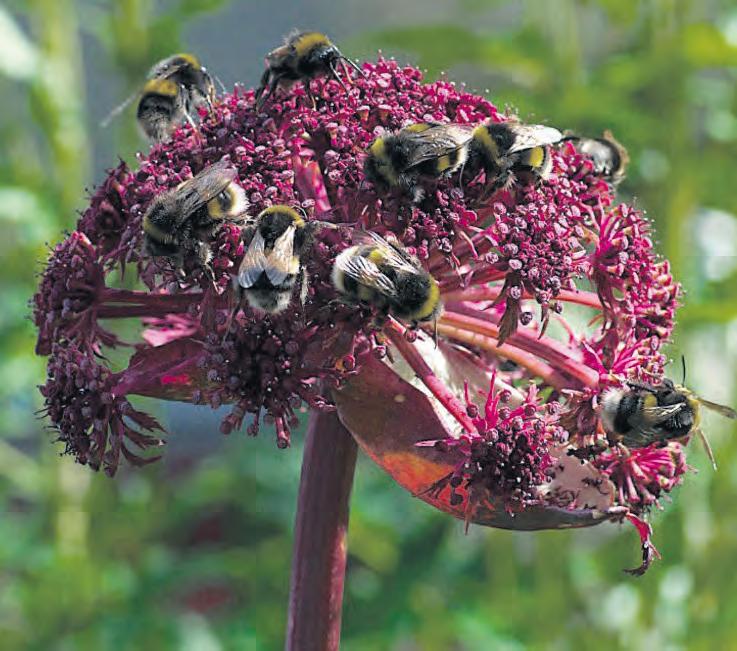
This phrase ‘as busy as bees’ is well known but just how busy is a honey bee? Let us see.
How much honey can a bee make in its short life? The answer is just one twelfth of a spoonful. All foraging bees are called worker bees, are female and for three to five days of their short life of three weeks or so they must search for pollen and nectar to take back to the hive to feed themselves and their young.
Each trip takes about 25 minutes and up to 20 trips a day happen depending on weather.
Exhausting work. Much honey is stored for the winter. We steal it so we must make sure that enough is left to see the bees through the winter.
Filling a one-pound jar of honey needs 550 bees and the nectar from two million flowers. Luckily one hive of bees contains up to 60,000 bees at the height of the flowering season. Whilst this exhausting work is going on, plants are being pollinated. We may think mostly of bees as pollinators (of which there are 270 species in the UK) including honey bees, bumble bees and solitary bees. There are others equally important; namely hoverflies, lacewings, wasps, butterflies, moths and other insects such as beetles.
Bees and plants have evolved together.
To avoid competition there are flowers to suit each pollinating species. They vary in size and shape though there are six recognisable flower shapes.
Bees are constantly searching for pollen and nectar. Plants are awaiting pollination. When a bee alights on a flower it may brush against the male part of the plant{anther) and pollen is likely to fall onto the bee. When the bee reaches the next plant some pollen may fall onto the sticky female part (stigma), and so cross pollination occurs. Most of the pollen is stored on the legs in an area known as the pollen basket.
How do pollinators use pollen?

Pollen is full of protein plus fats, minerals and vitamins. Queen bumblebees use pollen to engage their ovaries after hibernation, so they can start laying eggs. Bees also collect pollen to feed their young.
Some pollinators eat pollen themselves, such as some types of beetle and wasps. Pollen varies from plant to plant in quality and quantity.
The flowers that offer the best quality pollen are members of the legume family such as clovers, lupins and trefoils such as bird’s foot trefoil. If lawns were mown less often or even just a patch of lawn left long, clovers and trefoils are likely to flower, providing a much-needed source of pollen.
How
It’s a kind of a reward from plants.
Plants reward insects by providing nectar, which is water containing sugar, but they have to push deep down into the flower so brushing by the pollen to find the nectaries at the base of the petals. Plants advertise nectar by providing guidelines, scent and attractively coloured petals for the bees that see in UV light. It is a very efficient system that has evolved over many years. Nectar itself is very variable both in sugar content and availability. Bees like nectar to be 80per-cent sugar. For example, dandelion nectar contains 50per-cent sugar whilst apple blossom only 25 per cent sugar. Thus, the bees would choose dandelion because it must spend less energy extracting water and adding more sugar.
Some flowers produce nectar on demand like penstemons and the raspberry family but it is a very energy demanding process for the plant. Being so sugary, nectar is packed with carbohydrates, which give bees the energy they need to fly. Indeed, it’s thought that bees can only live for 24 hours without nectar, unless they are hibernating.
Other pollinators use nectar, too, including butterflies, hoverflies and other flies, and some beetles. They all use the energy from the nectar to find mates and establish nests. As gardeners we are increasingly asked to plant for pollinators but how do we choose welcome plants?
It is important to provide a variety of different plants because different insects are adapted to use specific plants. It is even more important to provide a range of plants for as much of the year as possible especially early and late when food is short and insects may die in their search for food. Snowdrops, hellebores, primroses,and mahonia are good choices. Late in the year Michaelmas daisies,some dahlias, caryopteris and especially ivy are useful.
Bees especially have plant favourites, so it is a good idea to plant groups of the same plant together to avoid the insect using too much energy in its search for its chosen flower. Single flowers are the most accessible because there are fewer petals for insects to negotiate before they can reach the nectaries.
Blackberry, apple blossoms and single roses are good examples.
Plants that are umbrella shaped like cow parsley are especially welcome to pollinators because there are many flowers close together so that insects can crawl over the plant without wasting valuable flight energy. Such plants include angelica, fennel, coriander, parsley and many vegetables if some are allowed to seed, such as carrots and leeks. Of course, we depend on pollinating insects too for they pollinate one third of all our food plants.
So why, I keep wondering, do we persist in spraying plants with poisonous chemicals that do not distinguish between garden friend or foe.
The ‘ide’ in pesticide, fungicide means kill/destroy deliberately.
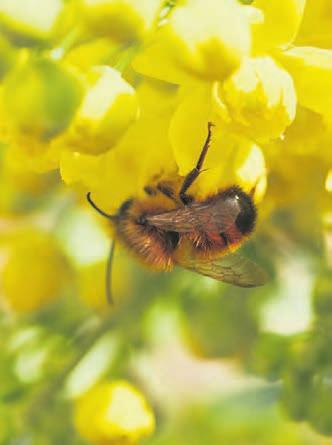

• Spring vegetation, such as hazel, snowdrops, primroses, crocus, willow, hellebore, heather, wild cherry, dandelion and hawthorn.
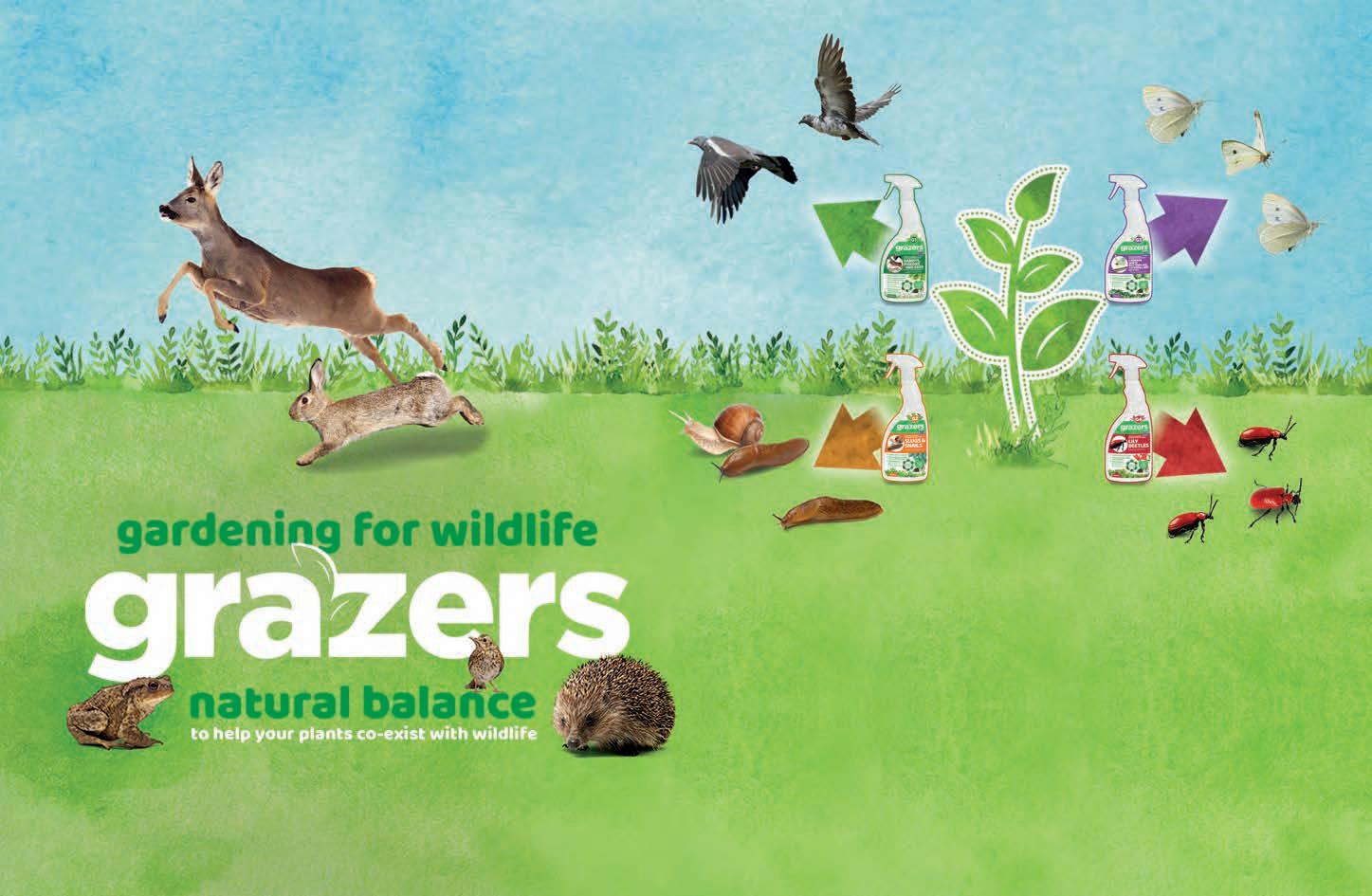
• Fruit trees;
• Acacia, lime, apple, chestnut;
• Woodland undergrowth such as campions, willow herb and meadowsweet

• Acacia, lime, apple, chestnut;




• Woodland undergrowth such as campions, willow herb and meadowsweet and many varieties of geranium such as the cut leaf or meadow cranesbills, knapweed, ajuga and cat’s ear.
• Perennial border plants, herbs & climbers sweet peas, lupins, vetch family, wisteria and honeysuckle, echinops, Michaelmas daisy, lavender, borage, marjoram and chives.
“It is even more important to provide a range of plants for as much of the year as possible especially early and late when food is short and insects may die in their search for food. Snowdrops, hellebores, primroses, and mahonia are good choices.”
There are probably more whispered trade secrets amongst gardeners when it comes to growing rhubarb than anything else in the garden. So many of us have our own tricks and ways of trying to grow the perfect sticks of what is a fantastically popular plant.
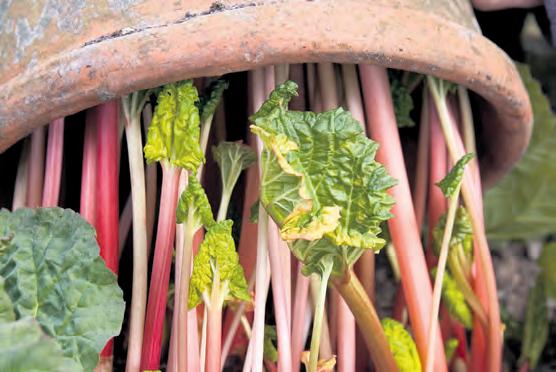
Yet one of the best pieces of advice when it comes to trying to achieve the perfect rhubarb plant is to care for the plant and monitor its progress season by season.
A healthy rhubarb plant will remain productive for at least ten years, so it makes an excellent investment. During the first year, you’ll need to resist the temptation to harvest the stems. But from the second year, you can harvest your rhubarb from April to June.
Rhubarb plants are very low maintenance, but they will produce better crops if given a little extra care and attention according to the season.
• ‘Champagne’ - Easy to grow, this is an early variety and one which is ideal for forcing to produce long, pink-tinged stalks. Leave it unforced for a deeper, red-coloured stem.
• ‘Victoria’ - These greenish-pink stems have an excellent balance of sweetness and acidity. It will produce a heavy crop, year after year.
• ‘Raspberry Red’ - Identified thick, deep red stalks with a superb, sweet flavour that can be harvested early in the season, without the need for forcing.
• ‘Glaskin’s Perpetual’ - This easy to grow garden variety produces large, juicy stems that can be lightly harvested the following year, if started in heat during the winter.
How do I plant rhubarb?
Prepared the ground by thoroughly weeding the area and digging in two bucketfuls per square metre/yard of well-rotted manure. Once you’ve done that, spread out the roots and plant so the tip of the crown is just visible above the soil. When planting rhubarb crowns or budded pieces, set them so that the top of the crown sits three cm below soil level. If you’re gardening on a heavy, wet soil then plant them slightly higher, so that the top of the crown sits at ground level. This will help to prevent crown rot. Rhubarb plants can get quite large so allow a spacing of 75cm (30”) between them. How important is it to force rhubarb?
Forcing rhubarb will yield an earlier crop – a useful option if you can’t wait until April for your first harvest. While clay or terracotta pots are traditional (and are specifically designed for this purpose), an upturned dustbin or a large bucket will work equally well.
What time is best to get rhubarb in the soil?
Rhubarb crowns and budded pieces are best planted in autumn or spring, while the soil is warm and moist.If you’ve grown your rhubarb in a pot, this can be planted out at any time of the year if the soil is not frozen, waterlogged or suffering from drought.
Seeds or crowns which are best?
Like most crops, you can grow rhubarb from seed, but it’s much easier to plant crowns or budded pieces. They establish well, making them ideal for beginners, but even experienced gardeners will appreciate the grow boost. Rhubarb crowns are established plants that are at least one year old. They will produce a crop in the first harvest season after planting, which is much sooner than rhubarb plants that are grown from seed.
What should not be planted near rhubarb?
Spring: Remove rhubarb flowers as they appear in order to direct the plants’ energy into growing tasty stems. A feed of general-purpose fertiliser will also give them boost during this time.
Summer: Keep an eye on your rhubarb plants and water them during dry periods. You don’t want the soil to completely dry out. Rhubarb that’s grown in containers will need to be watered much more often in order to keep the compost moist.
Autumn: When the leaves die back naturally, simply cut back the old rhubarb stalks to leave the buds exposed. Apply a mulch of well-rotted manure around the crown of the plant; this will help to conserve moisture in the soil and keep the weeds down, as well as feeding the plants for the following growing season. But take care not to cover the crown as this may cause it to rot.
In January, cover the crown with a layer of straw and then place your choice of large container over the crown to exclude the light. Forced rhubarb stems can be harvested around eight weeks after covering, which may be up to a month earlier than unforced crops.
However, try to avoid forcing the same rhubarb crown for two years in a row; this can weaken the plant. Grow several rhubarb plants at a time and force just one a year in rotation.
Where should I plant it?
While undemanding, there are a few key things to keep in mind when selecting a place to plant rhubarb.Firstly, rhubarb grows well in a sunny position with moist, well-drained soil, but it will tolerate semi-shade.
It doesn’t respond well to disturbance so the place you choose will need to be a permanent home – somewhere your plants can grow without interruption, from year to year. Take the time to properly prepare the right spot in your garden before you begin planting.
Sunflowers- avoid planting rhubarb alongside sunflowers and thistles which are all susceptible to curculios, a boring weevil. Rhubarb in particular falls prey to rhubarb curculios which can do a lot of damage, leaving notches in the stalks and leaves.
How do you grow thick rhubarb stalks?
Rhubarb is a heavy feeder and needs to be planted in soil high in organic matter if you want to have large, thick rhubarb stalks. It helps the plant to cultivate around it, and to keep it mulched, weed-free, and well-watered. The plant also likes a neutral pH soil.
Why should you not harvest rhubarb the first year?
With newly planted rhubarb, resist the temptation to harvest any stems in the first year, as this will reduce the plant’s vigour. The following year, pick just a few stems. After that, the plant should be well established and can be harvested normally.

A new gardening season welcomes a great batch of letters from our readers. If you have any thoughts, ideas, issues you’d like to share then write to us at Country Gardener, Mount House, Halse, Taunton, Somerset TA4 3AD or email editorial@countrygardener.co.uk
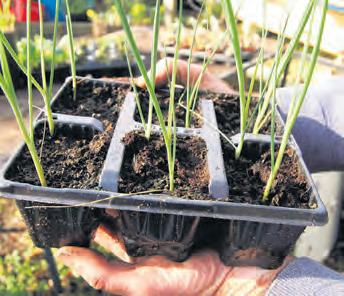
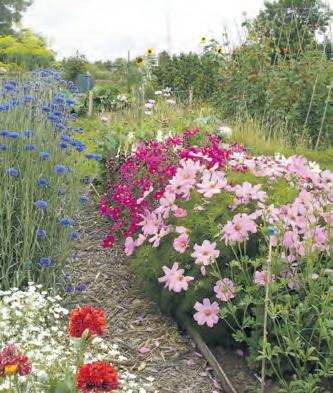

The average back garden is about 50ft by 20ft. I have had enough of seeing TV gardeners swanning around tending for several acres. It has no empathy with your average gardener, like me and I suggest many other viewers. Monty Don’s pond is bigger than my garden! The trouble is there is no one on TV who addresses what a typical gardener is looking for at a time when we are all worried about what we can afford and where we need to cut back on gardening costs and do things more cheaply. Another example of the BBC being out of touch!
Alan Fletcher BridportI have never really been a great supporter of leaving my garden full of dead and dying annuals over the winter. I think I have too tidy a mind for too much mess. However here comes the admission. A few days ago on a grey, frosty afternoon I sat and watched a robin balancing on a teasel and pecking away at the seed heads for about half an hour. I could easily have tidied that up but now I am so glad that at least some things in the garden were left wild. Sent by email

I’d like to suggest something to your readers ahead of a new growing season. It is to grow climbing peas and beans vertically on a trellis. I’ve been doing this for three years now. Climbing peas especially are some of my favourite crops, they are the ones that sum up summer with their flowers and lush growth. There is something 'active' about them with their reaching, coiling and climbing as they grow skywards and cover their supports. The good news about growing peas and beans is that it is relatively easy. Peas are hardy plants and can be started off early in the season and will be happy in most gardens. Runner beans won't like cold and exposed sites but are generally very reliable while French beans need a warm site but will produce huge crops of beans if conditions are right.
Anna Fisher TorquayI read that managers at the National Trust’s Mottisfont Estate in Hampshire say the invasive Spanish variety of bluebells and its hybrids have spread from the UK’s private gardens into the wild and are now established in woodland, posing a threat to our native bluebells.

Britain’s biggest landowner says the UK has more than half the global population of the native bluebell but loss of habitat, climate change and the continuing spread of the Spanish bluebell is threatening one of the nation’s favourite spring icons.
So, I am supporting a ban on the Spanish invader and plan to identify and dig out these varieties while they are in leaf in my garden as the bulbs are almost impossible to find when the plants are dormant. I hope many of your readers will follow my lead.
Patty Osborne ExeterIn my local Co-op a pack of three leeks, washed and trimmed were on sale for £1.69p. It got me thinking if there ever was one vegetable which is worth growing every year in the vegetable plot it is leeks. They are easy to grow, keeping growing through the winter and are wonderful to just go and pick and cook fresh from the garden. Apart from asparagus I guess there isn’t better value to be had when you start growing things.
Maria Porter CirencesterWhen you boil or steam vegetables, don't throw the water away. After it's cool, use it to water the plants you are growing in containers.
You'll be surprised how plants respond to this type of water. It has always worked for us.
Hattie Taylor ReadingOver Christmas we got the family talking about how my parents had a very successful allotment just outside of Taunton and the things about gardening they learnt.One of the ‘ trade secrets’ my dad told me sounds crude but he said it worked . Small animals will steer clear of your vegetable patch if its perimeter has been marked by human pee. Before you hop out to spend a penny, he claimed it needed to be diluted first. That way the odour will be unnoticeable to humans. He claims this also works for foxes and deer as long as the urine comes from a male.
Katie Taylor Henlade
Our allotment association has recently experienced a lot of bad feeling from a couple of allotment holders who decided last year to grow nothing other than cut flowers on their plot. It annoyed some fellow gardeners to the point of a special meeting being called. It was, say some of them, against the spirit of owning an allotment and growing fruit and vegetables for the family. Feelings ran high but luckily sense prevailed and it was made clear that if you owned an allotment you can do what you want with it - within reason.
Alan Jones Cheltenham
It’s no wonder illuminated gardens are so popular over in the build up to Christmas. They are just spectacular and for anyone who hasn’t enjoyed them make a note for later this year. We visited Glow at RHS Rosemoor and loved it as did the children. It far exceeded our expectations and clearly the technology has moved on a lot in recent years as I can’t believe the sort of displays on show which have been possible a few years ago. We then took in Ignite at the National Trust property at Polesdon Lacey near where my parents live in Dorking and again with hand held lanterns and a lovely lit trail on a cold evening it was magical and until last month something I would never have thought of going to.
Vera Toombs BarnstableIt was over 80 years ago, in the heart of the Cotswolds, that Maye Emily Bruce developed her ‘Quick Return’ composting method.
Aptly named because of the speed at which compost can be made (in as little as four weeks), it also removed the requirement for ‘turning of the heap’, hence the method became renowned as a fast, easy and effective way for gardeners and farmers to make fertile compost.
‘Miss Bruce’, as she was known, innovated her remarkable ‘QR’ method from her farm near Cirencester. ‘QR’ is based on the use of a herbal activator which is applied into the layers of the compost heap as it is built. But these were no ordinary herbs – they all have special properties which give health to the soil through the positive interaction they have with microscopic soil organisms.
The herbs, like the formula for the activator powder, were never a secret and are as follows: nettle, dandelion, yarrow, german chamomile, common valerian, and oak bark. The story goes that when the manure on the farm ran out, she looked for other ways to provide sustenance for the soil in the beautiful garden and vegetable plot which she had created at the farm.
As a member of the Anthroposophical Society, Miss Bruce learned about biodynamic gardening and composting. However in those days, the Society were secretive with their methods which involved complex preparations for making the compost.
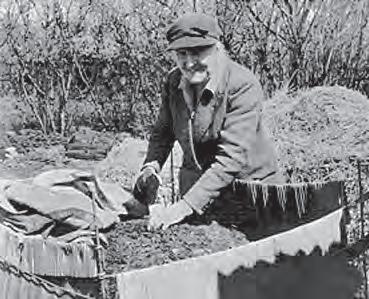

Then by experimentation, she found that the combination of the herb solutions, plus a small amount of honey, made a powerful compost activator when diluted to a ratio of 10,000 to 1.
The activator was put to the test and approved by the Benedictine nuns at Stanbrook Abbey near Worcester.
In 1938, L.F.Easterbrook, the agricultural correspondent for The News Chronicle, who became a friend of Miss Bruce, wrote an article about her method. Hundreds of letters of interest landed on Miss Bruce’s doorstep and this started the ball rolling for ‘QR’. Her first book From Vegetable Waste to Fertile Soil, published in 1940, most certainly helped the population to grow healthy food through the Second World War.
There was a drawback - the activator had to be sent out as two bottles of solution. Further development by Miss Bruce resulted in the activator being produced (and sent out) in powder form by drying, crushing and blending the herbs. The powder could then be added to water as and when required. This solved the problem of two different solutions and it made the packing and shipping much easier.
By 1946 Miss Bruce had written her second book Common Sense Compost Making. The book became very popular, with seven impressions of the first edition and two further editions (edited by others), bringing her work into the 21st century.
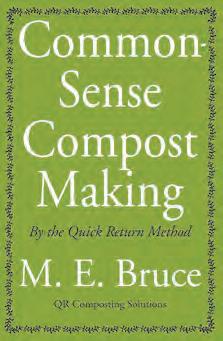
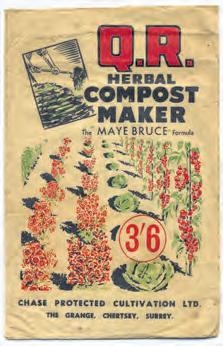

As the word spread, demand grew for ‘QR’ activator in many countries including Canada, South Africa, New Zealand and Australia. This popularity continued into the 1970’s.
Realising that one day she wouldn’t be around to promote and sell ‘QR’, she sought out a ‘soil conscious corporation’ to ensure security of supply. Chase Organics sold the activator from 1947 until their operation closed in 2017. Under the wing of Andrew Davenport, ‘Gardeners Cottage Plants’, took up the baton and continue to manufacture and sell ‘QR’ to this day.
In her time, Miss Bruce was considered as a likeable, witty and characterful person. She would carry samples of her compost in her apron pockets. There is a local tale of Miss Bruce walking along Bisley High Street handing out handfuls of compost to children from her pockets. She certainly earned her name as ‘Queen of the Compost’. Miss Bruce died in 1964 but will always be remembered as a driving force for composting and organic principles and as a true ambassador for the health of our soils - issues of grave importance for the future of our planet. Maye Bruce and QR deserve to be a cherished piece of our horticultural heritage.
Whilst she maintained a good relationship with the Society, she had her own thoughts on how to simplify the use of the herbs they used. Consequently, Miss Bruce departed from the Society to progress with her ideasshe extracted the essences from the flowers and made solutions.
Miss Bruce was also busy in other areas. She was one of the founder members of the Soil Association and was elected in their early councils. Lady Eve Balfour (the founder member) and Miss Bruce were very good friends and they would often attend shows together, recruiting new members, promoting the importance of soil health and raising awareness of other environmental issues. Miss Bruce’s mantra was ‘Give back health to the soil and abolish disease in plant, animal and man’. Surely just as true now, as it was then.
Author of the book ‘Quick Return Compost Making – The Essence of the Sustainable Organic Garden’ by Andrew E Davenport.
‘Mrs. P.’ (the maid for Miss Bruce for 26 years), for biographical/historical info used in this article.
QR activator and books are available from www.gcplants.co.uk Tel: 01434 672594
Maye certainly earned her name as ‘Queen of the Compost’Perhaps the most beautiful of all daffodil varieties and one of the last to appear in the garden these specialist bulbs have become hugely popular in recent years
What are poet’s daffodils? Also known as poeticus daffodils, poet’s narcissus, or sometimes pheasant’s eye daffodil, poet’s daffodils produce beautiful blooms with pure white petals.

The blooms appear later in the season than most daffodil varieties. They are native to Central Europe, but they have gained popularity with gardeners around the globe. The hardy plants thrive in nearly every corner of the UK. Once planted, poet’s daffodil bulbs will provide beauty for many spring seasons to come.
They have pure white petals that surround a yellow, flattened cup fringed with red.

Easy to grow, it’s a brilliant species for naturalising and growing in long grass, where the intense fragrance that emanates from the flowers will waft on the breeze. A bunch of the cut flowers will easily scent a room indoors.
For best results, grow Narcissus poeticus in full sun or partial shade in moist, well-drained soil. The flowers can be deadheaded, but don’t cut the foliage back until it’s yellow and withered.
Grow poet’s daffodil bulbs about two to four weeks before the ground freezes in the autumn. Nearly any type of moist, well-drained soil is fine, although a raised bed or sloped area is ideal. Fortunately, poet’s daffodil plants tolerate moist winter conditions better than most other varieties. Improve the quality of the soil by digging in a few inches (8 cm.) of well-rotted manure or compost.
It was not until the 19th century that classification of the many narcissus species was attempted. Although the name ‘daffodil’ is often applied only to the larger trumpetflowered cultivars, with the short-cupped and multiheaded cultivars referred to as narcissi, breeders and other enthusiasts refer to all kinds as daffodils.
Due to their popularity as cultivated plants, thousands of cultivars have been bred. The perianths (petals) are mostly yellow or white, but can occasionally be orange, green, or red or a combination of these colours. Today, many cultivars have brightly coloured coronas (cups) which may be yellow, white, pink, orange, red, green or a combination of these.
Remove daffodil blooms as soon as they fade, otherwise the bulbs will exert considerable energy attempting to create seeds.
However, remove only the bloom and stem, not the leaves. This is the critical aspect of daffodil care after they bloom. Why do we leave the unsightly foliage in place? In simple terms, the leaves absorb energy from sunlight, and through the process of photosynthesis, the energy is converted into chemicals that produce sugar — the food that keeps bulbs blooming year after year.
If you remove the foliage too early, the bulbs will be stunted, which results in smaller and fewer blooms in the following year.
This also explains why daffodils should be planted in bright sunlight. If your daffodils are planted in partial or full shade and they don’t produce big, healthy blooms, you might want to dig them and move them to a sunnier location after the foliage dies down.
Leave the foliage in place until it dies down and turns yellow. Usually, this takes about six weeks. If the appearance of the dying foliage is driving you crazy, don’t braid the leaves or bunch them in rubber bands, which reduces the amount of sunlight available to the leaves. Instead, consider ways to camouflage the leaves. For example, plant perennial plants that will hide the dying foliage as they grow in spring. Provide a handful of bulb fertiliser or any general-purpose fertiliser when shoots poke through the ground in early spring.
Be sure to fertilise the soil around the daffodil plant, but keep the fertiliser off the foliage. Divide daffodils every three to five years, or whenever you notice that flowers are smaller in size or number.
The word ‘Narcissus’ from Greek mythology. A nymph called Echo fell in love with a young Greek named Narcissus, but Narcissus told her to leave him alone. Heartbroken, she lived alone until nothing but an echo of her remained. Nemesis, the God of revenge, heard the story and lured Narcissus to a pool. Narcissus, who was very handsome and quite taken with himself, saw his reflection in the pool and, as he leaned over to see better, fell in and drowned.
He turned into the flower.
Daffodils were introduced into gardens in about 300BC. Daffodils were brought to Britain by the Romans who thought the sap from daffodils had healing powers. Actually the sap contains crystals that can irritate the skin.
Dwarf daffodil flowers, also known as miniature narcissus, look just like their full-size counterparts. Perfect for rock gardens, naturalised areas, and borders, these bulbs will give you flowers for years if you provide the right conditions and care.
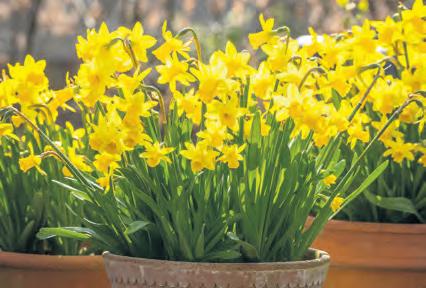
Miniature narcissus is just another name for a dwarf daffodil variety. Like regular-sized daffodils, they grow from autumn planted bulbs and bloom in spring. The size of a dwarf daffodil depends on the variety, but generally they grow four to six inches (10-15 cm.) tall
with flowers that are just one and a half inches (four cm.).
Some mini daffodil varieties to try include:
BABY MOON: This variety produces cheerful yellow flowers that look like a classic daffodil.
HAWERA: Hawera is an heirloom variety with yellow flowers that hang from the stems like pendants.
TETE BOUCLE: For a miniature, double bloom you can’t beat this deep yellow variety.
PIPIT: Pipit will give you multiple, pale yellow, delicate blooms per stem.
Secluded cosy cabins & lodges in wooded valley running down to Wembury Bay & SW Coastal Path

Plymouth, Dartmoor & lovely South Devon Villages & Towns in easy reach. Pets Welcome. Forest School. Tel: 01752 862382 www.churchwoodvalley.com
Carmarthen Bay South Wales
Seafront chalet situated on estuary.
Sleeps up to 6. Seaview. Well Behaved Dogs Welcome. Free WIFI. Open from 1st March - 31st Dec. For Brochure
Tel: 01269 862191
GLORIOUS NORTH DEVON. Only 9 cosy caravans on peaceful farm. Wonderful walks in woods & meadows. Easy reach sea, moors & lovely days out. £125-395pw. Discount couples. Nice pets welcome. 01769 540366 www.snapdown.co.uk
BOSWORLAS NEAR SENNEN/ST
JUST, CORNWALL. Cosy Cottage, rural views, Sleeps 2-4 01736 788709 www.bosworlas.co.uk
SOUTH DEVON LODGE on peaceful farm. Sleeps 4. Central for beaches, Salcombe and Dartmouth. Phone for details 01548 853669.
ACCOMMODATION HOLIDAY COTTAGES
4* Delightful cosy cabin for 2, nestling between Wye and Usk Valleys. Shirenewton village & pubs close by. Wonderful walks, splendid castles, bustling market towns. Perfect for all seasons!
Tel: 01291 641826
Email: lynne@bryncosyn.co.uk
www.bryncosyn.co.uk
ACCOMMODATION WITH BEAUTIFUL GARDENS
Specialists in Nature Recovery & Habitat Enhancement
Providing Nature-Based Solutions for: Ecological Landscape Design, Wildlife Ponds, Lakes, Wetlands, Nature Landscaping, Conservation Arboriculture. Consultancy & Design. Management & Construction. Tel: 01392 240 877 Restoration@LostHabitat.uk LostHabitat.uk



Yenstone Walling Dry Stone Walling and Landscaping Patrick Houchen - DSWA member Tel: 01963 371123 www.yenstonewalling.co.uk
PERSONAL POSTAL FRIENDSHIP CLUB. Friends, pen pals, perhaps romance. UK-wide. No internet needed. Call for details: 01633 526523.
Penrice Castle Gower
16 holiday cottages on an 18th century Estate on the Gower Peninsula with beautiful Grade I listed historic park and gardens.


Tel: 01792 391212 www.penricecastle.co.uk
Near Stratford-upon-Avon
Lovely self-catering cottage in peaceful location: large garden.
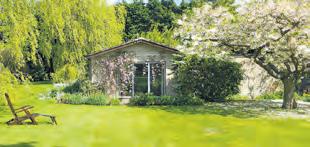
Sleeps 2. Perfect for famous gardens, NT properties & Cotswolds.
Tel: 01789 740360
www.romanacres.com
NORTH DEVON NEAR CLOVELLY. 3 delightful cottages situated in 12 acres of idyllic countryside. Sleeps 2-4. 1 Wheelchair friendly. Brochure: 01237 431324 www.foxwoodlodge.co.uk foxwoodlodge@outlook.com

CARDS & PRINTS
WYE VALLEY/FOREST OF DEAN. Fully equipped single-storey cottage with two en-suite bedrooms. Wi-fi.Recently awarded Visit England 4-star GOLD. Rural retreat, shops/pubs one mile. Enquiries welcome. Tel: 01594 833259 www.cowshedcottage.co.uk

A range of over 200 greetings cards and prints from the flower paintings of ANNE COTTERILL

We sell to both individuals and trade. No order too small. Contact us for your free catalogue.

Mill House Fine Art Publishing, Bellflower Gallery, Market Place, Colyton, Devon EX24 6JS
Tel. 01297 553100 info@millhousefineart.com
www.millhousefineart.com

jonne@jonne.co.uk
07770 720 373
Artist blacksmith based near Axminster designing and manufacturing garden plant supports, structures, garden art and fine art bronzes. Commissions welcomed. www.thegardenersblacksmith.co.uk

POLYTUNNELS SEED

POLYTUNNELS FROM £499 AVAILABLE TO VIEW BY APPOINTMENT 01363 84948 info@ferrymanpolytunnels.co.uk www.ferrymanpolytunnels.co.uk


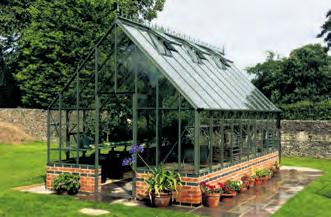

ENDANGERED
Franchi seeds Eden Project seed range now includes Butterbeans and Chickpeas. Try our New PURE Native British Wildflower seeds. Request your catalogue of endangered, heritage, regional and ethical seed varieties now. www.FranchiSeeds.co.uk




Welcome back to our popular gardening themed crossword compiled by Saranda which over the past year has become enormously popular with readers. The winning entry to be drawn by us will receive £100 of RHS gift tokens. Completed entries should be sent to Mount House, Halse, Taunton, Somerset TA4 3AD. Closing date is Friday, 31st March. The winner of our Winter issue crossword was Fran Baker from Moreton-in-Marsh.
ACROSS
1. The English Channel in French? (2,6)
6. Common name of Cynodondactylon used for lawns in warmer regions (7,5)
12. Where the predominant cash crop was grown in the southern US (6,4)
13. Genus of flowering plants known as bur-reed (10)
14. The act of laying out grounds which imitates natural scenery (9,9)

16. One of the great flat races run in June for stayers (5,4,3)
17. Cared for and protected (8)
19. Strawberries are the fruit of this genus of plants (8)
23. The chief of an imaginary secret society called the eleutheri (12)
25. The offices of the heads of monasteries (10)
27. Genus of evergreen shrubs named after French botanist Jean Gaultier (10)
28. Unusually dry, warm weather in autumn (6,6)
30. These animals are also called aardvarks (8)
32. Any of several bog plants thought to cause fungal disease in sheep (3,5)

34. British plant also called London pride (4-2-6)
38. Edible tuber with white flesh, eaten as a vegetable (9,9)
41. To join or unite (10)
42. Removed a tumour from its enveloping cover (10)
43. Nupharlutea, the yellow water-lily (6,6)
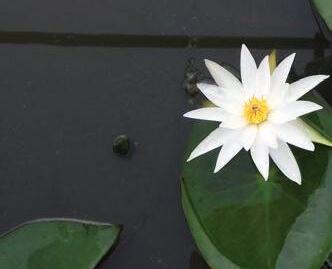
44. Low-growing flowering plants of the genus Lobularia (8)
DOWN
2. Large European pine trees that yield cembra nuts (7)
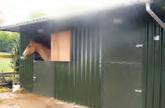
3. Name of the ‘Merchant of Venice’ (7)
4. Sweetener called jaggery in India (4,5)
5. To stare at someone closely (7)
6. Any of various herbs of the Cardamine genus (11)
7. Tropical tree of the genus Syzgium cultivated for its fruit (4,5)
8. Belonging to a certain African country (7)
9. Thorny Moroccan tree that bears fruit like olives (5)
10. Family of plants that include the buttercup (13)
11. Informal name for the potato (4)

15. Finer and more like a popular fruit (8)
18. Scottish term to cure, smoke or dry fish or meat (5)
20. William ________, Irish gardener and journalist (1838-1935) (8)
21. Part of the year when plants are able to be cultivated (7,6)
22. A French goodbye! (5)
24. The Western hemlock is a member of this genus (5)
26. The cassia tree whose dried pods produce a laxative (5)
27. Cranesbills belong to this family of flowering plants (11)
29. A spicy mixture of apples, currants etc., baked in pastry (9)
31. In a way that relates to matters of current interest (9)
33. Sean Connery starred in this 1968 Western (7)
35. A tangerine originally grown in Japan (7)
36. Cadences in medieval music (7)
37. A horizontal timber connecting two rafters in a roof (3,4)

39. Lending of money at unreasonably high rates (5)
40. A bump or knot on a tree trunk (4)


There are people out there who do not let total ignorance of the subject stand in the way of a strongly held opinion. You will hear them spouting their wisdom in the public bar of the Chain and Sprocket, holding forth on diverse subjects including that good old staple of misinformation: the Tree Preservation Order (TPO).

So, let’s see if we can knock some of the wind out of their sails…….
All oak trees are protected.
No, they are not. A TPO must be made to protect a tree or trees – there is no blanket coverage of any species.
Trees have to be over three inches in diameter to be protected.
No, they don’t – there is no lower size limit for a TPO, it simply must be made.
They can’t TPO a birch tree because it is a weed.
Yes, they can – anything which might rightly be called a tree can be protected by a TPO.

Blanket TPOs cover every tree within a designated area.
Not necessarily – not all ‘Blanket’ or Area TPOs are made to protect all species.
A TPO could state ‘all the native trees within the area A1 on the plan’, although most are: ‘all trees of whatever species within area A1 on the plan’ Even then Area type TPOs only cover trees growing on the site when the Order was made. Anything growing or planted after the date the Order was made is not
protected by it. There are some local authorities who still have area TPOs made in the 1950s and 60s – potentially nothing within them is protected. Greedy developers are not bothered by TPOs – they just fell the trees and pay the fine. Anybody convicted of a TPO violation also receives a criminal record which can have implications in other areas of their lives. Also, the process of the prosecution can significantly delay a development being completed. I know of one developer who was bankrupted when he was wrongly accused of a TPO violation. Nowadays, the fine can be ‘all profit’ made from the site, which renders the offence pointless.
I don’t need permission because I only want to prune it; I’m not cutting it down. Every live part of the tree is subject to the full protection of the TPO, including the roots. There are some exemptions but, essentially, you need permission to cut any part of it. Cable companies are Statutory Undertakers and TPOs don’t apply to them.
Yes, they do. Statutory Undertakers, water, gas, electricity, telephone, cable, etc., have exemptions which allow them to undertake necessary works to maintain or install their equipment. However, there is a difference between ‘necessary’ and simply ‘convenient’. If your local planning authority or residents group is on the ball, Statutory Undertakers can be forced to work in a tree friendly manner.
If my tree falls over and kills somebody it is the council’s responsibility because they TPO’d it. No, it isn’t. The responsibility to take all reasonable precautions to prevent an accident or loss occurring to a third party due to something you own is still yours. If you have a tree that is in an obviously dangerous condition and you do nothing about it, the liability falls on you. The council is only liable if you have applied to remove the tree on the grounds of it being an unreasonable risk, with a supporting statement from a person suitably qualified to assess the tree. The council have then unreasonably refused consent, and the predicted failure has occurred within 12 months of the decision.
www.treeadvice.info
Cath Pettyfer - Devon cath.pettyfer@countrygardener.co.uk
Tel: 01837 82660
Design & Production
Aidan Gill aidan@countrygardener.co.uk
Distribution & Stockists
Pat Eade
distribution@countrygardener.co.uk
786139
Corina Reay - Cotswolds & Dorset corina@countrygardener.co.uk Tel: 01823 410098
Classifieds classified@countrygardener.co.uk
Gemma Stringer gemma@countrygardener.co.uk
Accounts and subscriptions
Heather Rose heather@countrygardener.co.uk Magazines
Anything which rightly might be called a tree can be protected of
Mark Hinsley ploughs his expert way through what most people get wrong when it comes to the all-powerful Tree Preservation OrdersMark Hinsley runs Arboricultural Consultants Ltd offering tree consultancy services.










